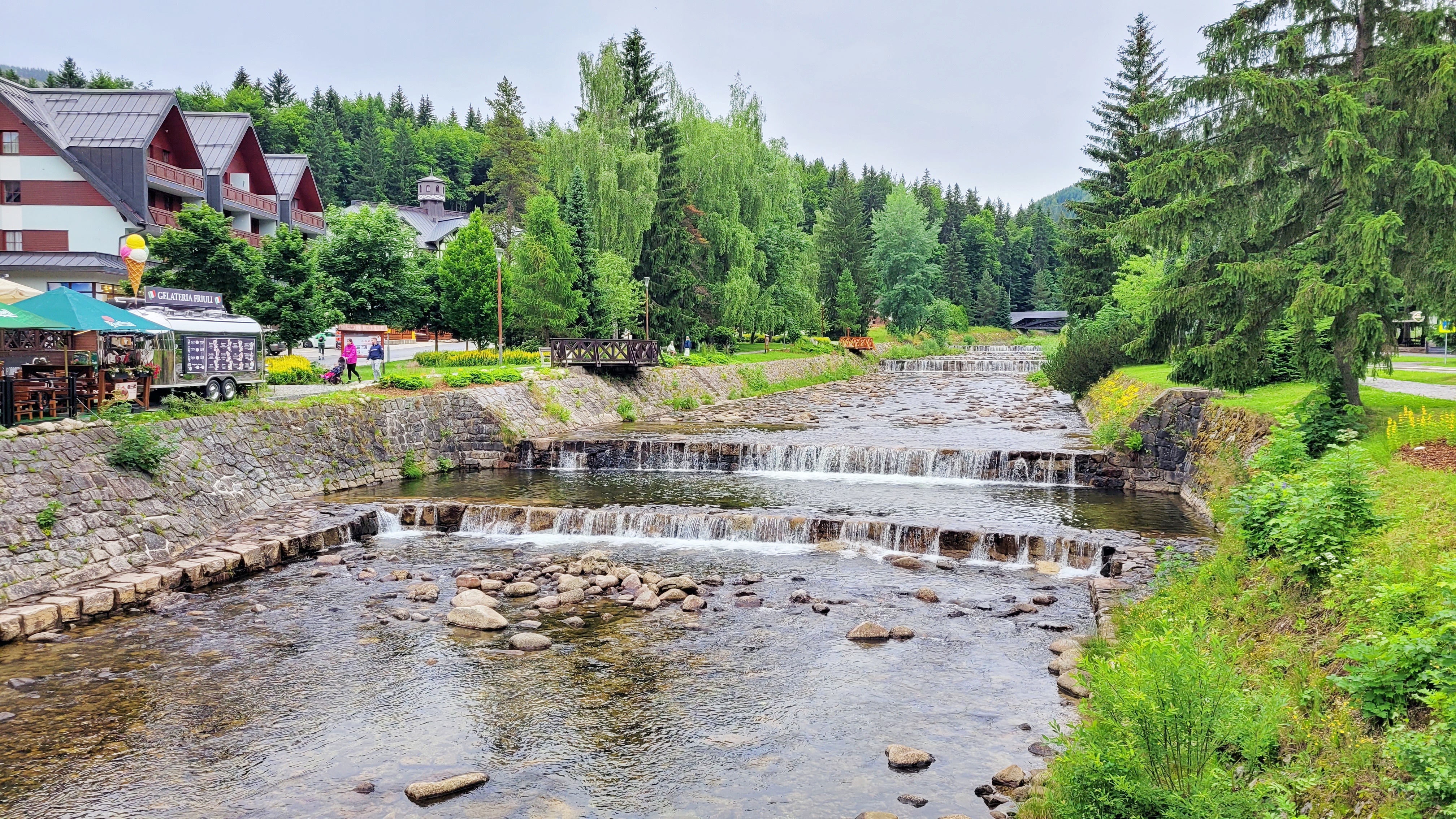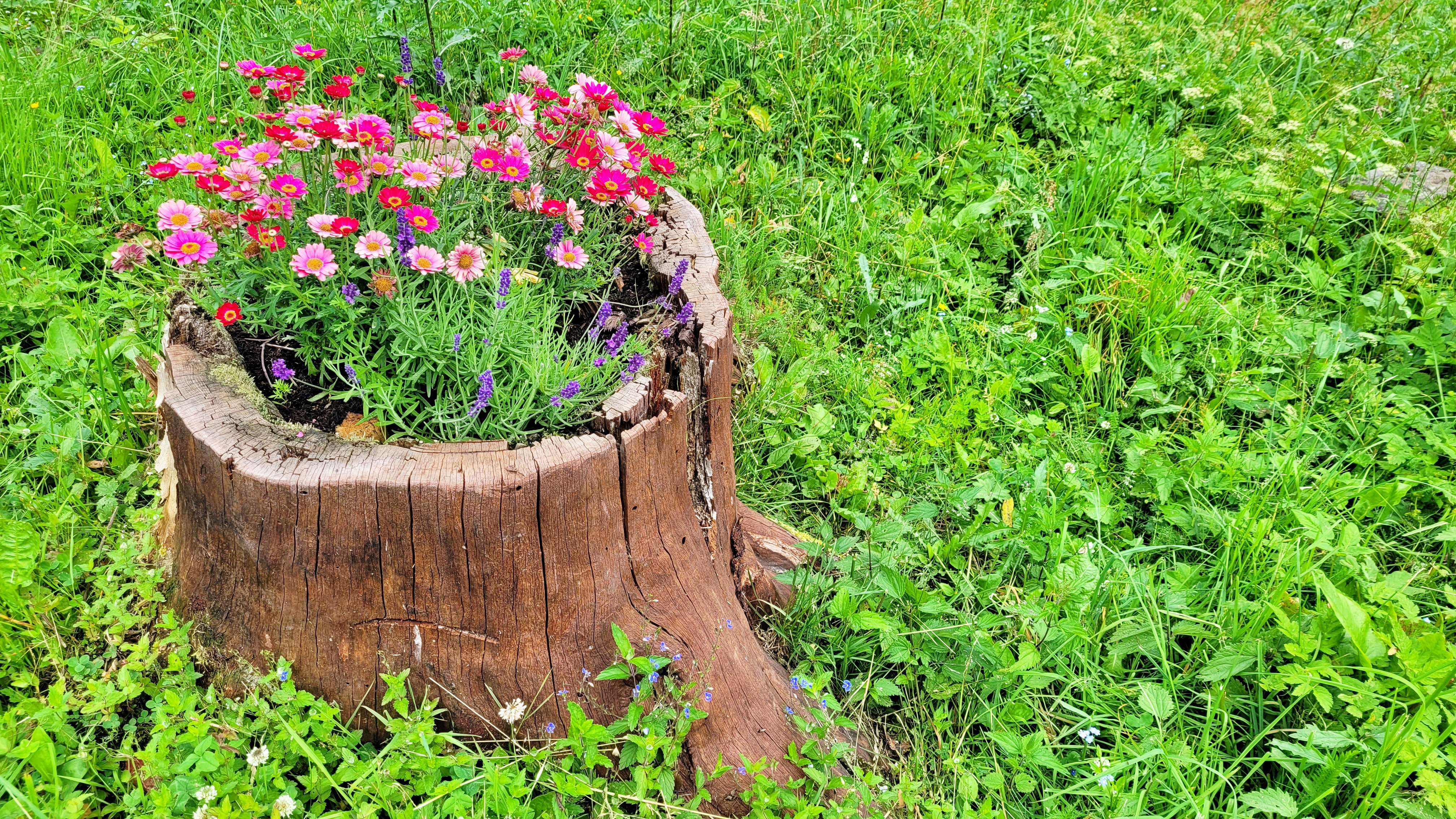
It would be a sin not to visit our highest mountains in the northeast of Bohemia. It lies along the state border with Poland. And who hasn’t been to Snezka, as if he hadn’t. As they say, at least once in a lifetime. The Krkonoše Mountains are really beautiful and the ubiquitous green is a real balm for the soul. There are plenty of nature trails. And that’s why we decided that rather than just being in one place and making trips from there, it would be better to walk between places.
We chose the route Harrachov – Špindlerův mlýn – Pec pod Sněžkou – Sněžka. And it was really great. The Krkonoše slopes look like a primeval forest. You will simply fall in love with the summer Krkonoše!
A LITTLE BIT OF HISTORY
The fame of the Krkonoše Mountains began to spread across Europe in the 18th century, when herbalists began to penetrate deeper into the previously inaccessible mountains in search of plants for the production of medicinal remedies. They also spread the originally unknown local legend of Krakonoš, the lord of the mountains, who is now familiar to children and adults alike from fairy tales. A large part of the Krkonoše Mountains falls within the Krkonoše National Park (KRNAP), which was declared in 1963.
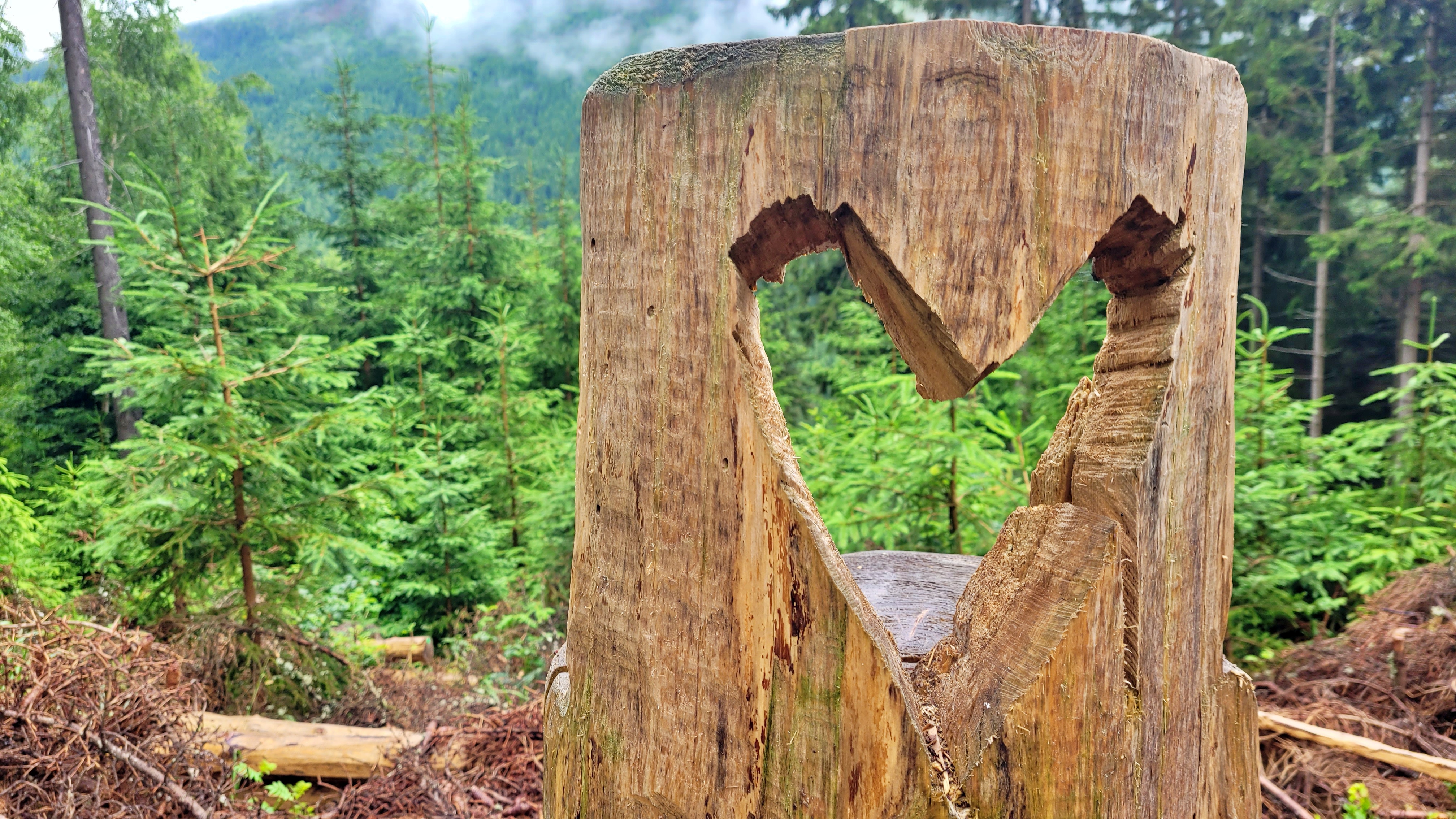
THE WAY HARRACHOV – RUČIČKY – POD LYSOU HOROU – DVORAČKY – ŠPINDLERŮV MLÝN
Length of the route: 16, 2 km
HARRACHOV
Our starting point is the village of Harrachov, which we reached by bus from Prague. The original village of Dörfl was founded in the 17th century and at the beginning of the 18th century was renamed Harrachsdorf, now Harrachov, after the owners of the local estate. The Harrach family was originally a Czech noble family. After World War II, Harrachov grew to include the settlements of Nový svět and Rýžoviště, or solitudes on Polish territory, in exchange for an equally large area near Kacířská skála. Rýžoviště is considered one of the oldest mining settlements in the Krkonoše Mountains.
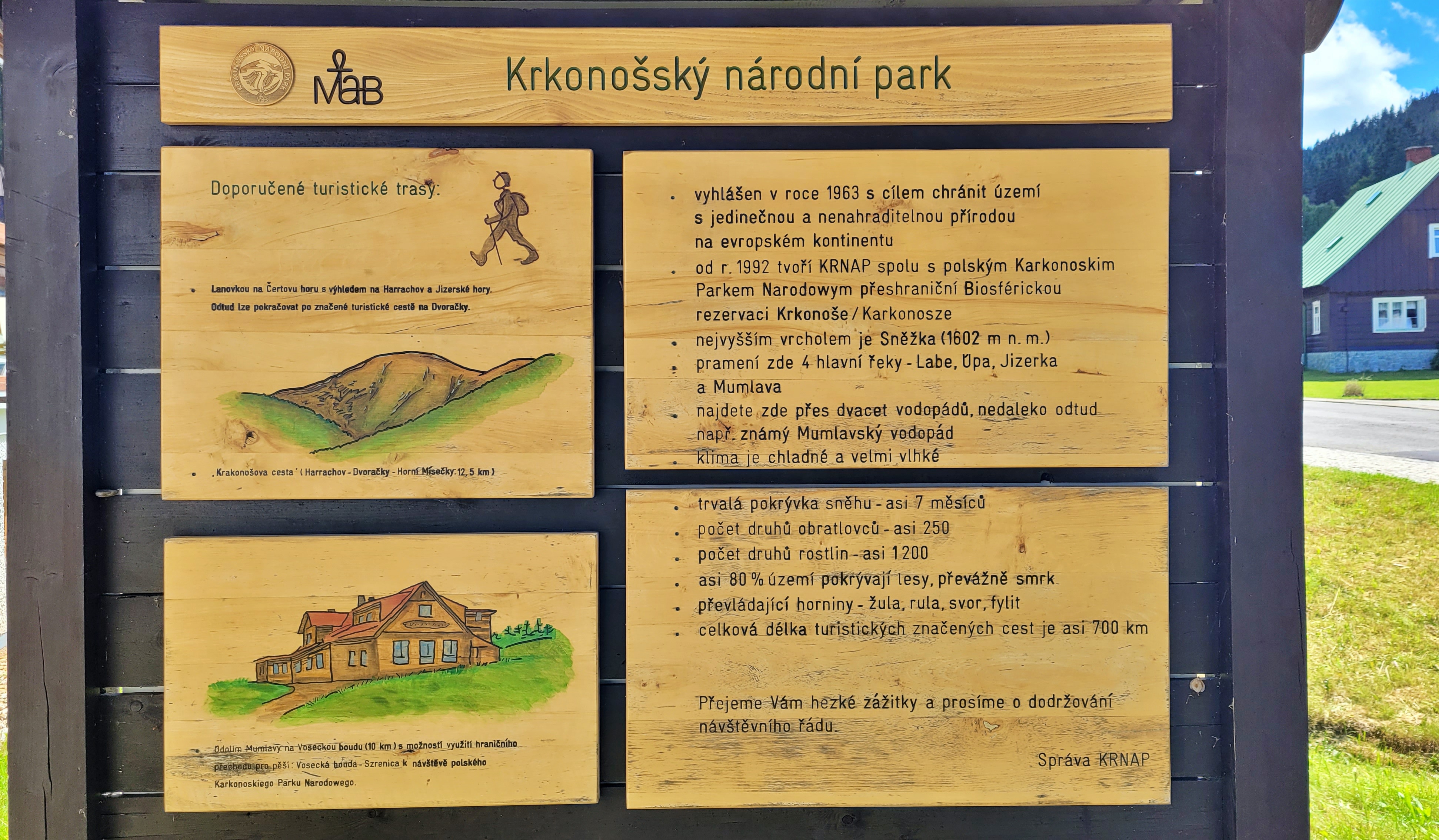
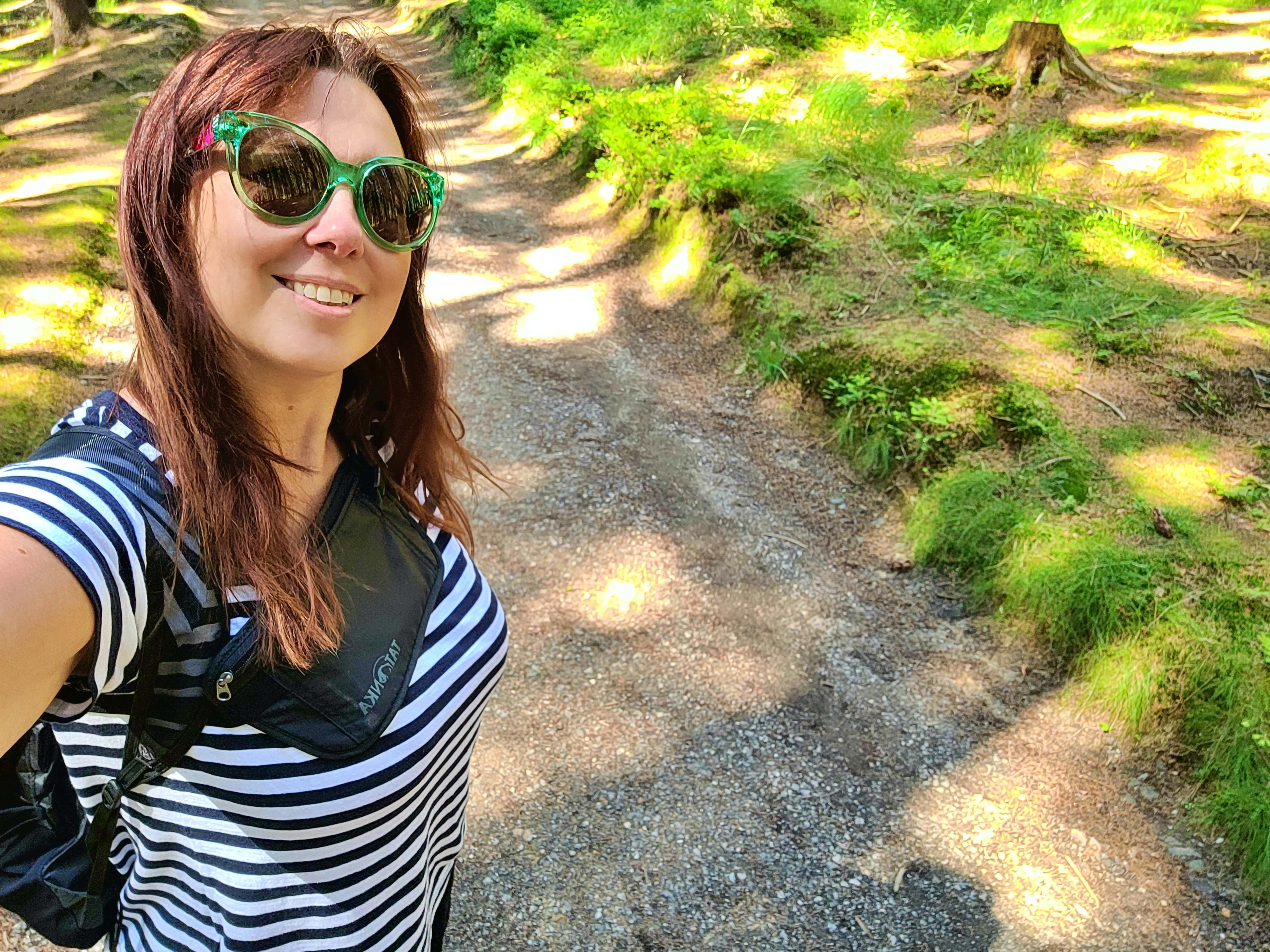
WHO WAS JAN NEPOMUK FRANTIŠEK COUNT OF HARRACH?
Count Harrach was born in Vienna, but his mother came from the ancient and influential Bohemian Lobkowicz family. He came to prominence thanks to his ownership of extensive estates in north-east Bohemia. Thanks to his interest, forestry flourished in the Krkonoše Mountains. He contributed greatly to the building of Krkonoše roads, and established a number of hiking trails, which he had marked not only in German but also in Czech. He was even at the birth of the Czech Tourist Club in Jilemnice and became its honorary member.

FOLK AND MODERN ARCHITECTURE IN THE GIANT MOUNTAINS
Immediately upon entering Harrachov, I was struck by the Krkonoše architecture. I am absolutely fascinated not only by the folk architecture, but also by the modern one. Our ancestors built houses in the Krkonoše Mountains that corresponded to their possibilities and needs. Wooden timbered houses were typical for this region. There are buildings of the Poysizerian timbered house (western part of the Krkonoše) and the Podkrkonoše timbered house (eastern part of the Krkonoše).

So I’m sure you can understand that I was in my element here. The owners of the log cabins valued warmth more than light in winter, so their windows were small. They didn’t need much space, and even what they had they shared with livestock.
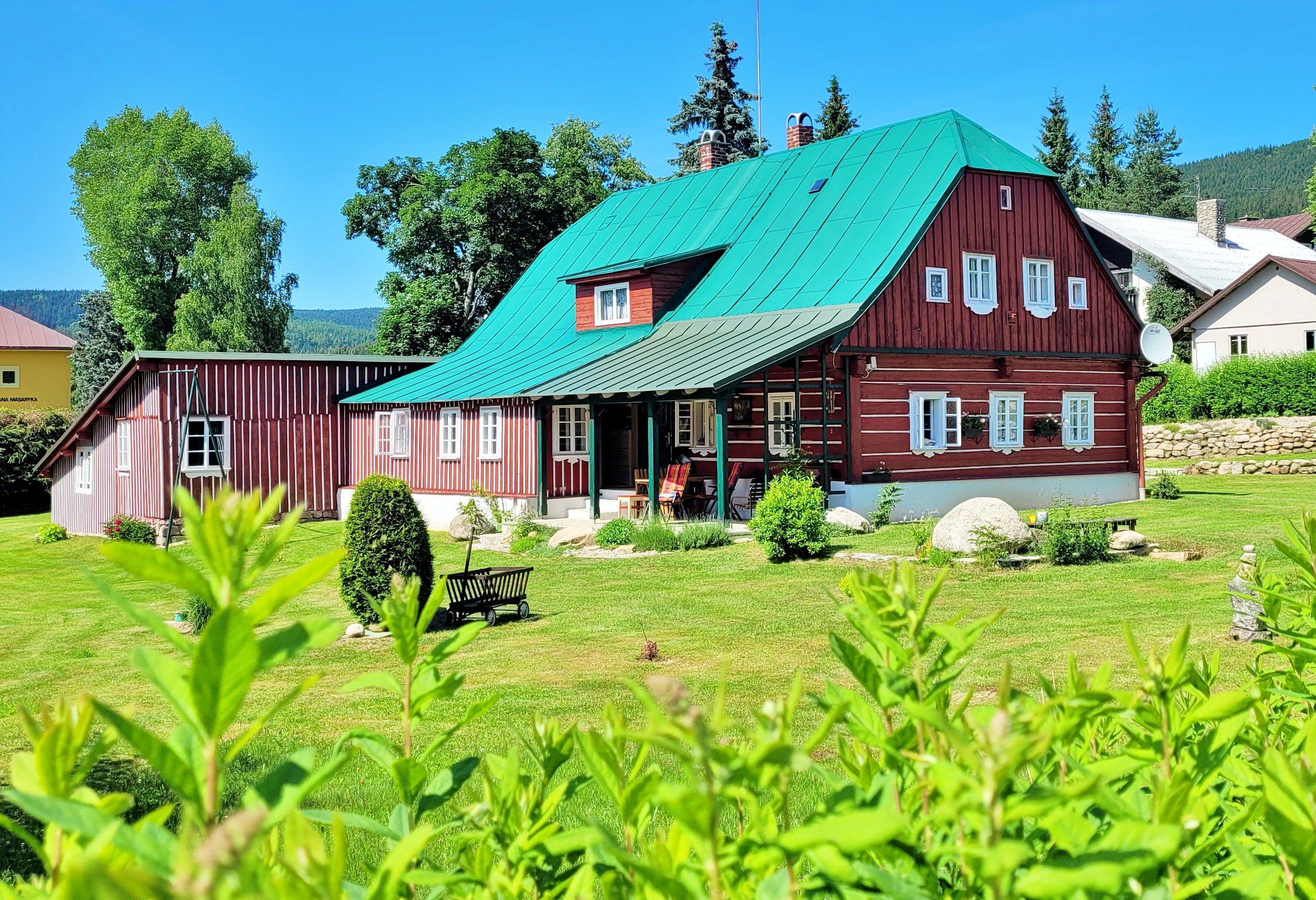

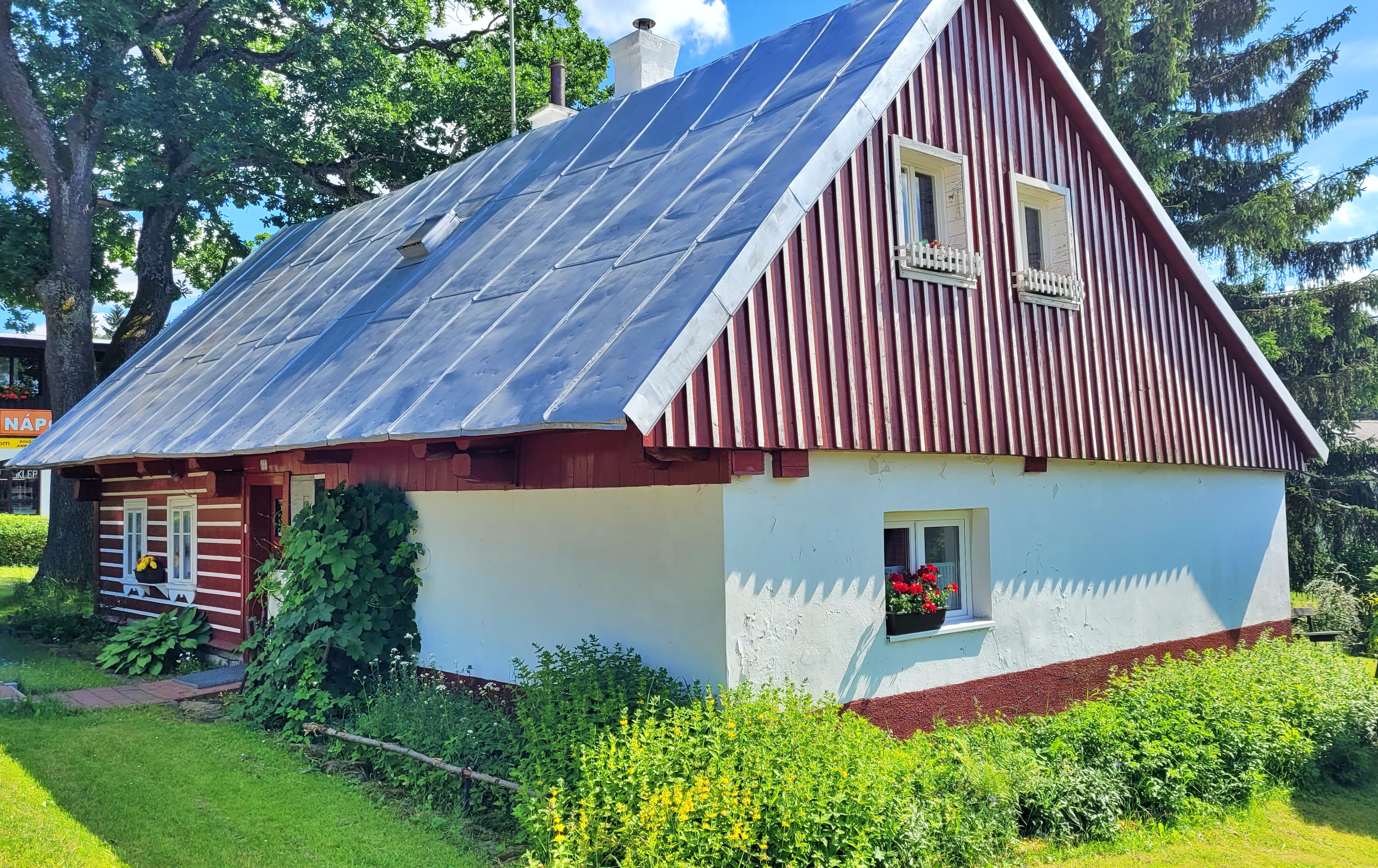
However, in time the brothels were replaced by mountain huts. Over time, however, they burned down or fell into disrepair. They are built of wood, and so fires used to be their curse. Then they were replaced by hotels and, of course, there are beautiful modern complexes and private houses. It’s hard to judge whether that’s a good thing or a bad thing.
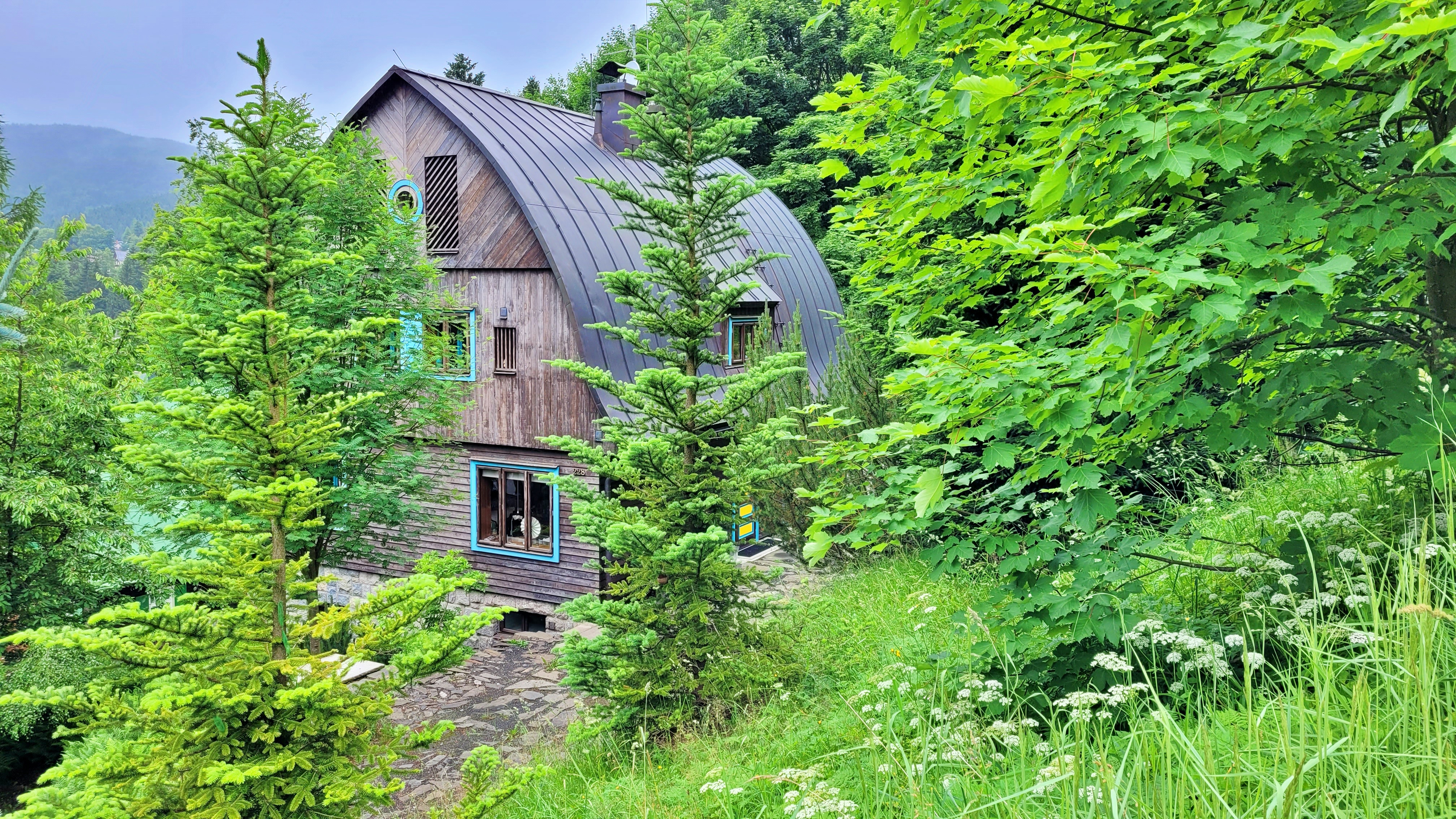
We also go on a small circuit through Harrachov, but only lightly, because we save our legs.
THE SPRING OF ST. JOHN OF NEPOMUK
The statue of St. John of Nepomuk is an example of St. John’s Day veneration in a rural environment in the first half of the 19th century. The cast-iron statue was cast according to the same model as the one on Charles Bridge. The spring water is attributed with healing effects. It is said to have helped Countess Anna, after whom the whole valley is named.

We leave early in the morning, right after breakfast. We walk along the green path through the bee nature trail, towards Špindlerův mlýn.

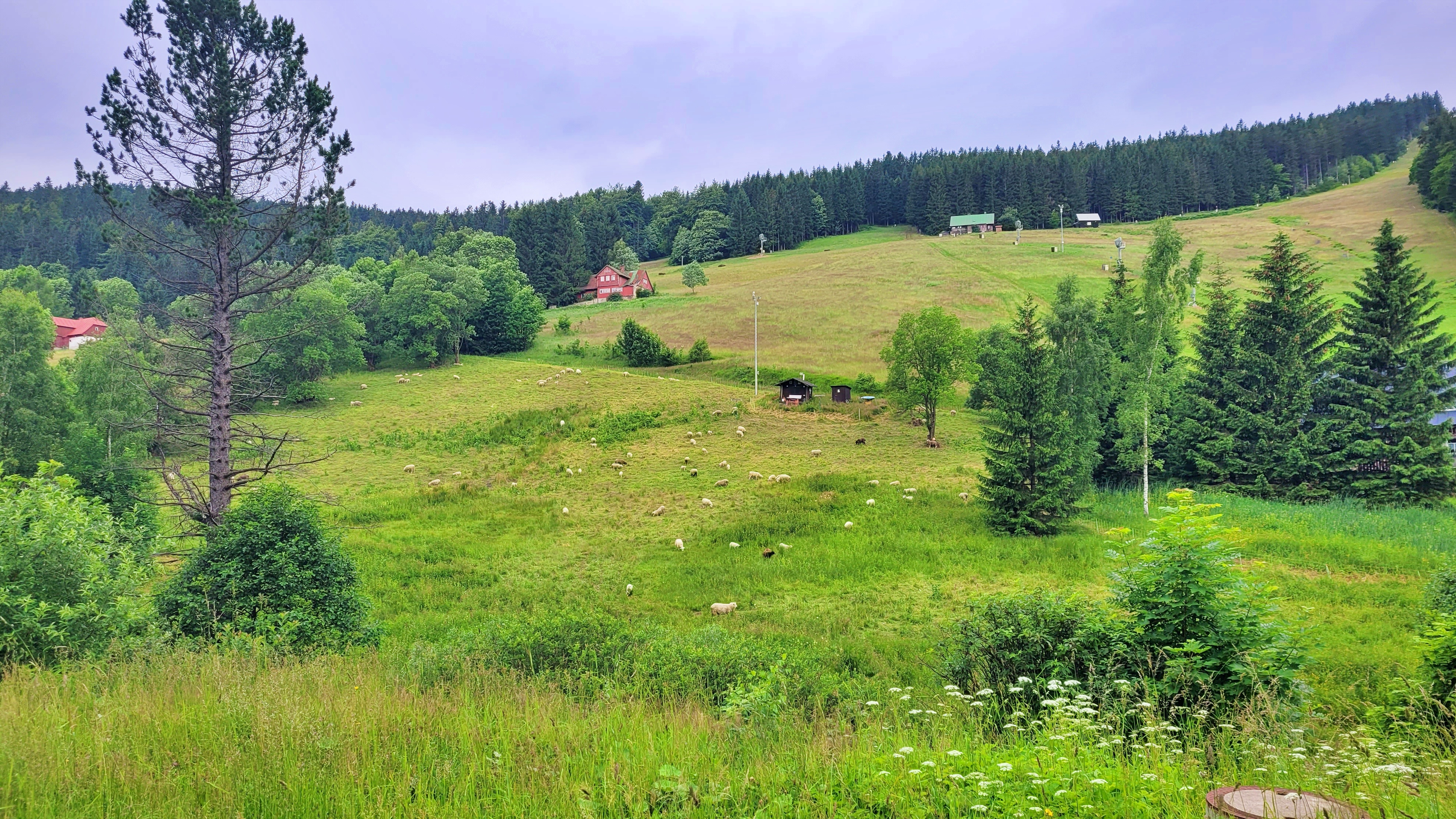
THE BEE NATURE TRAIL OF JAN COUNT HARRACH
The path also leads us through the bee trail, which is over 3.5 km long. I like the ubiquitous signs that celebrate our nature.

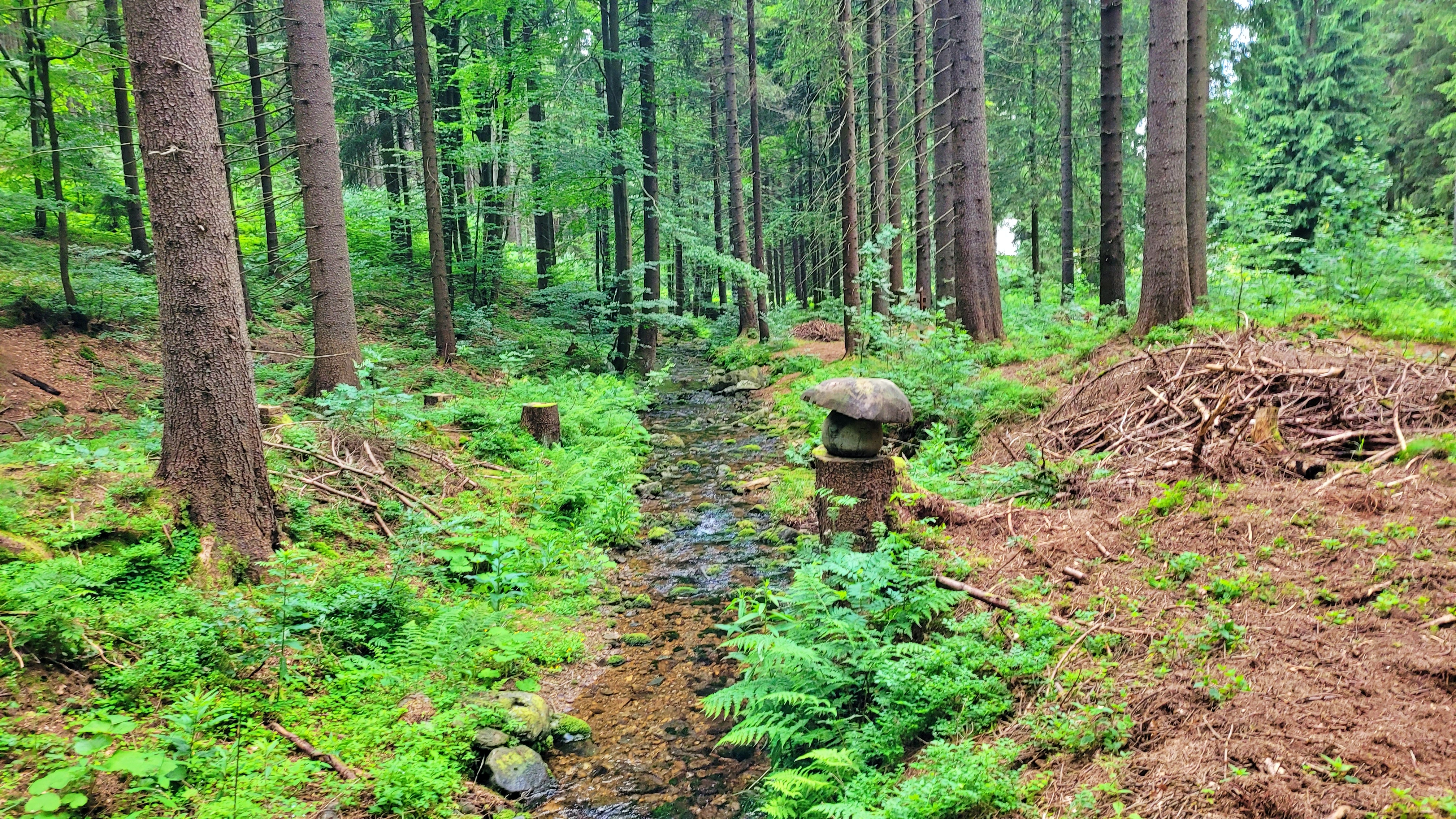
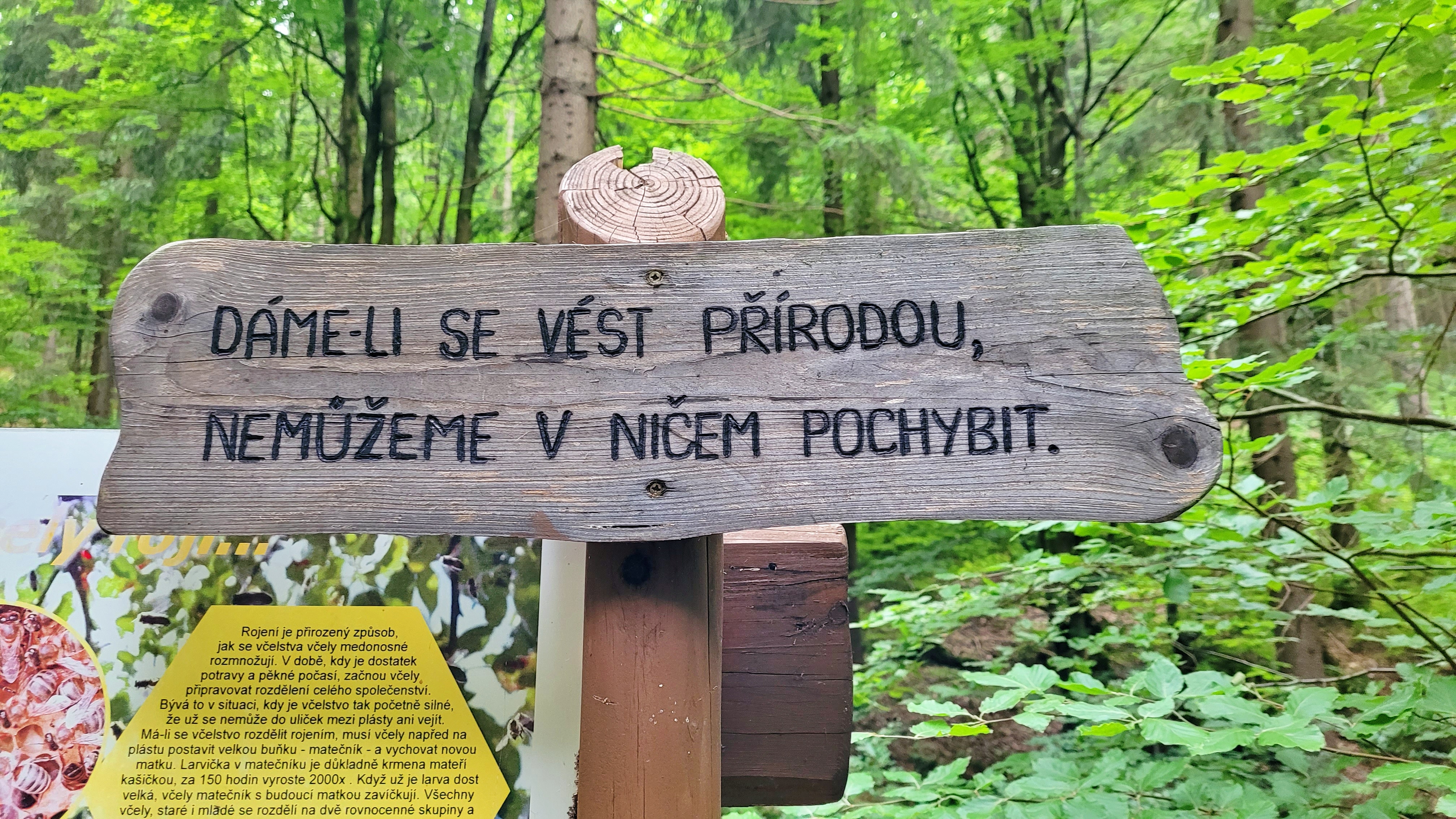
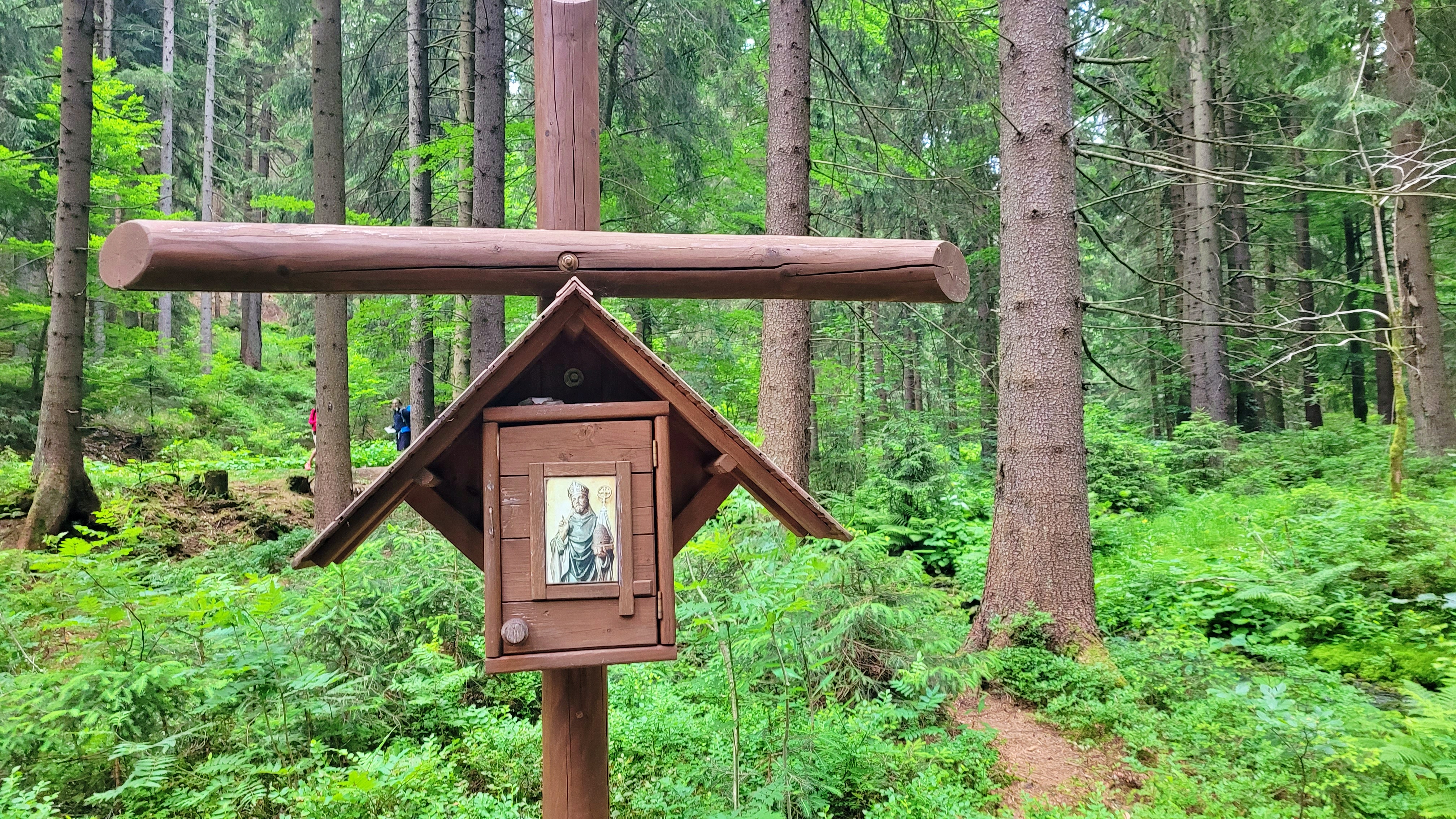
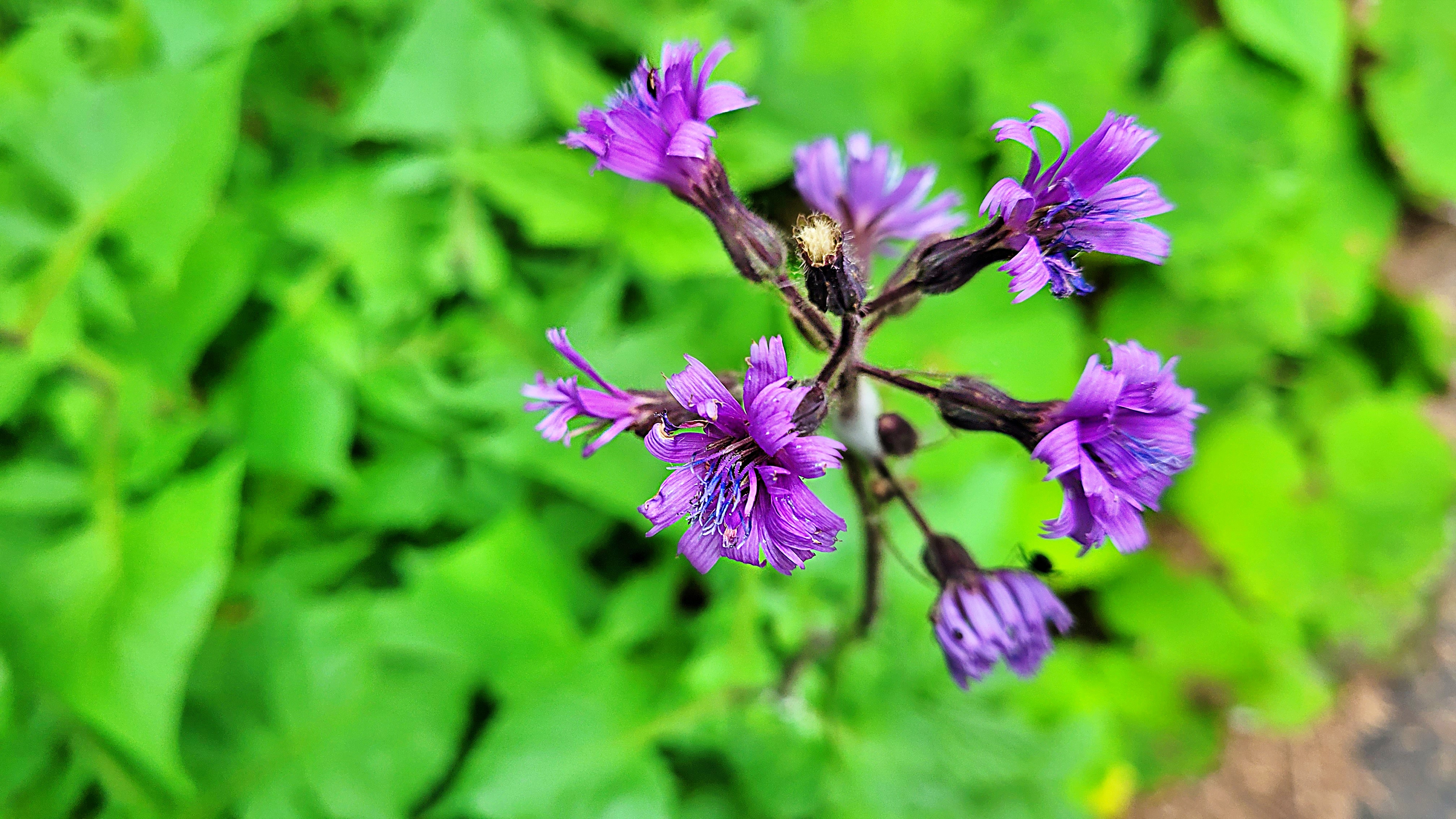

RUČIČKY
The somewhat mysterious name Ručičky hides an important crossroads in the Krkonoše Mountains. The hiking trails here run in five directions, hence the name Ručičky – five paths like five fingers. As a proper visitor to the Krkonoše Mountains, I want to enjoy not only the views, walks and nature, but also to learn something. Not too much. Just a little. And especially something interesting, short and understandable. And the Krkonoše have to admit that they can find a lot of information here.
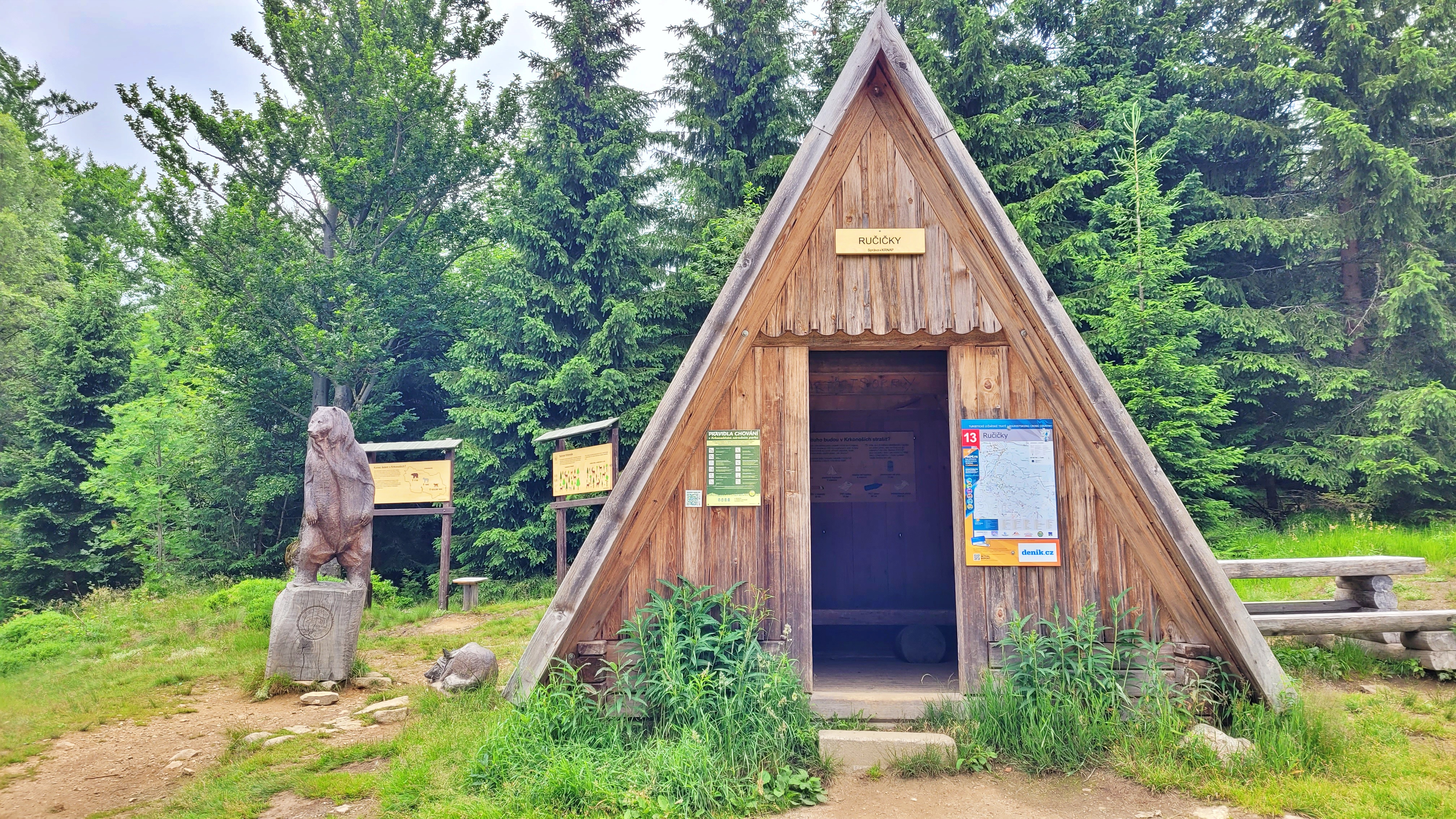
MAN INSTEAD OF BEASTS
At the end of the 20th century, there were about 1150 deer and roe deer in the Krkonoše Mountains. Thanks to this, the Krkonoše forest was well “eaten”. When there were a lot of deer, there were a lot of wolves and lynxes, which hunted them and thus reduced their numbers. Did you know that for a third of the year deer can eat nothing but tree bark and young twigs? People exterminated the beasts in the Giant Mountains because whoever shot a beast was a dude, and because they hunted domestic animals and deer. People were a little afraid of them.
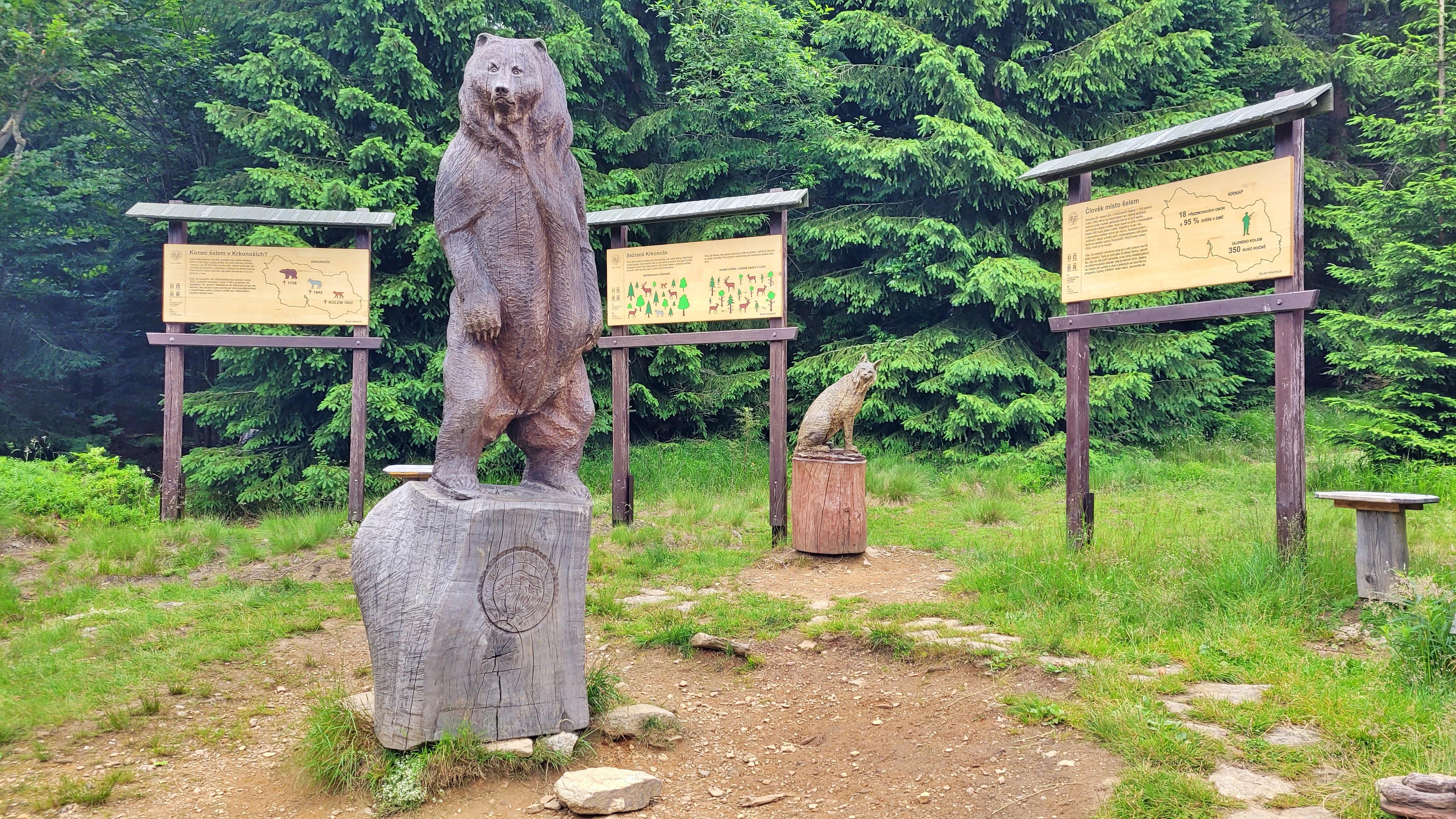
POD LYSOU HOROU
DVOŘAČKY
Dvoračky is a very old chalet, founded in 1707 by the Schier family as a mountain farm for cattle breeding in the surrounding vast meadows. The original hut burnt down and the burnt down site was bought by Count Harrach and rebuilt into a well frequented inn. In 1921, during the land reform, it passed into the hands of the state and was leased to the Czech Puhonné family, who later bought it. After the totalitarian regime, the hut was devastated and a completely new building was built.

Today it served as a shelter from the rain for most visitors. As it’s getting close to lunchtime, we can’t resist the delicious Krkonoše cuisine.
PECULIAR KRKONOŠE CUISINE
Traditional Krkonoše dishes include kyselo, kucmoch, mushroom kuba and cabbage rolls. In this region, housewives had to make do with modest foodstuffs such as cabbage, potatoes, mushrooms, fresh herbs and legumes. And that’s why I wouldn’t be me if I didn’t taste at least some of it. I was quite surprised at how imaginatively our ancestors were able to process what little grew in the fields or woods here.
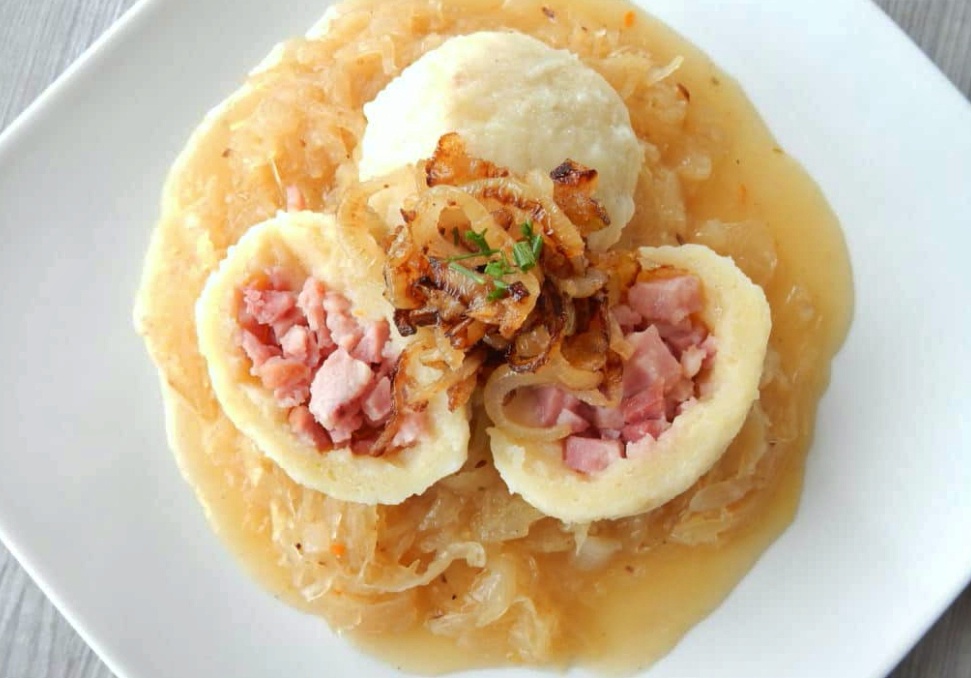
When you say Krkonoše cuisine, you also say sour in the same breath. The nutritious soup is made from bread leaven. For this soup, the necessary leaven was obtained from scraps of bread dough. Before the sourdough was cooked, it was so-called rejuvenated, i.e. it was covered with lukewarm water, sprinkled with rye flour and then left near the stove in a pot of sourdough. And those who did not have a bread oven at home went to the baker. Sourdough goes well with caraway seeds, salt, dried mushrooms, sautéed onions and fried eggs. It used to be a fasting dish, but gradually it started to be eaten every day. It even served as a calendar for the Krkonoše weavers. By the time they had the deliciously sour soup the week after the 18th, they knew that the next day would be Sunday. And of course I tasted it too, because it brings good quality protein, vitamin B and fibre to the body. And because it comes with potatoes, it adds a lot of nutrients to the meal.

DOES GREEN CALM AND ENERGIZE YOU TOO?

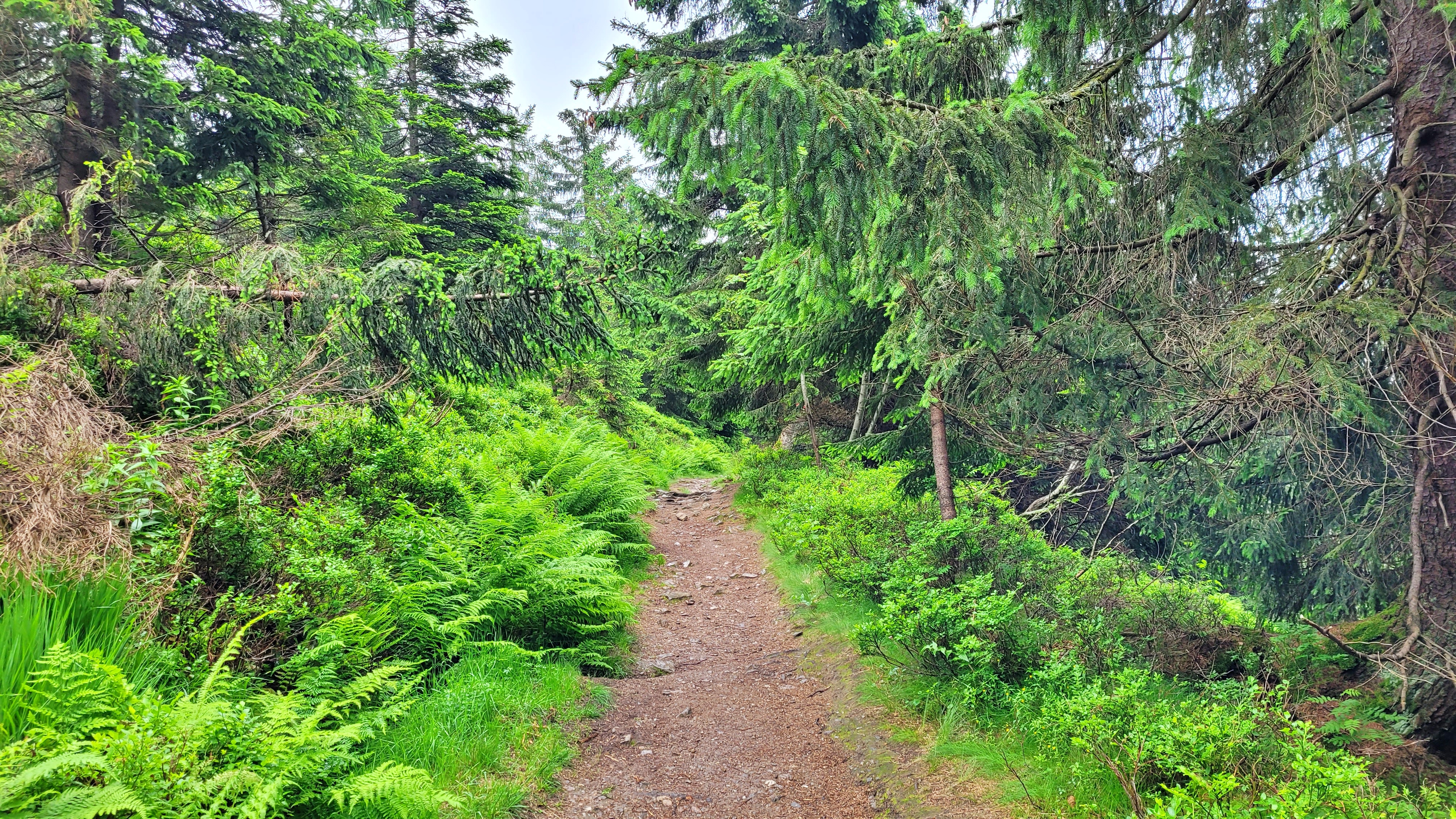
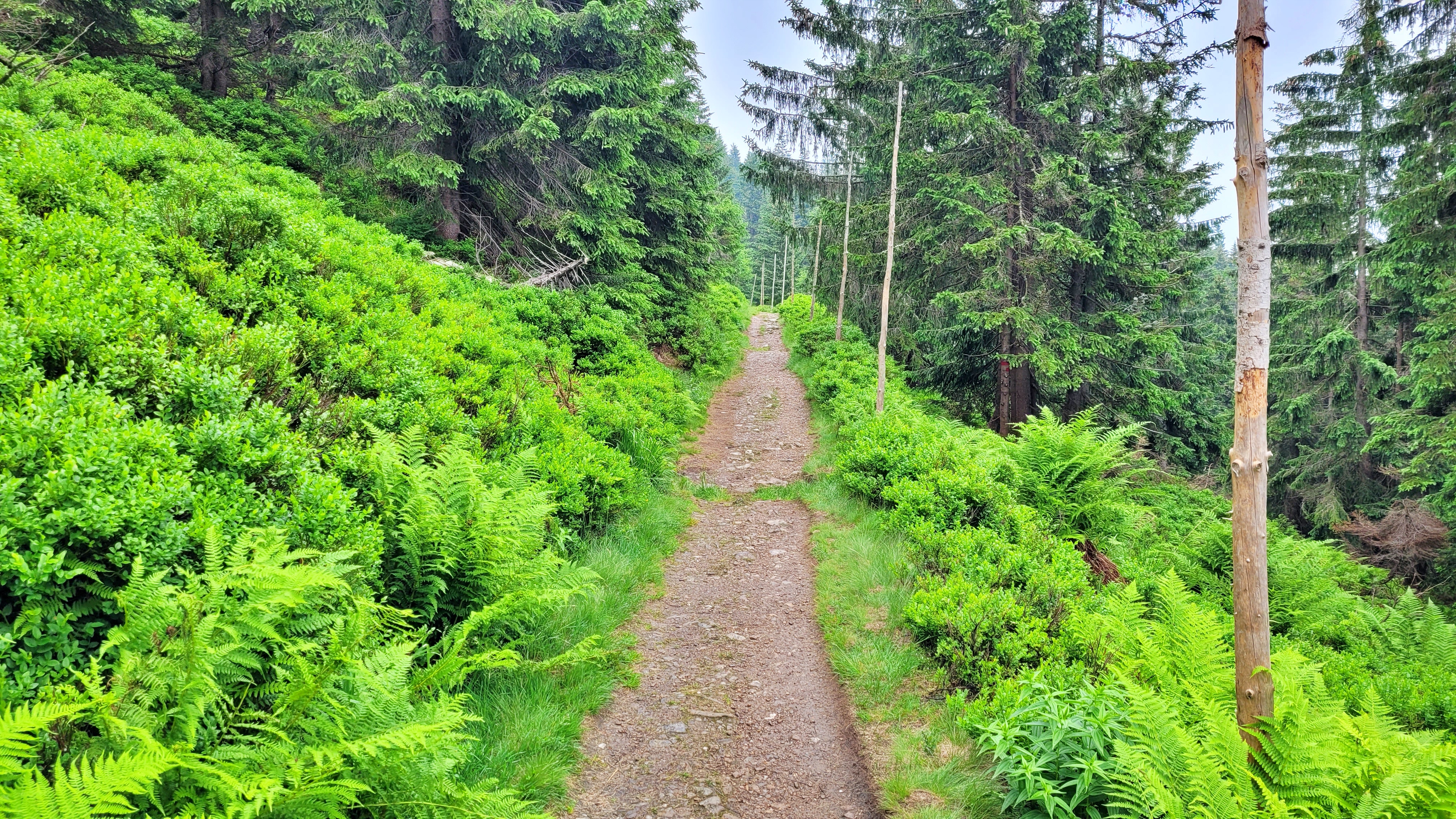
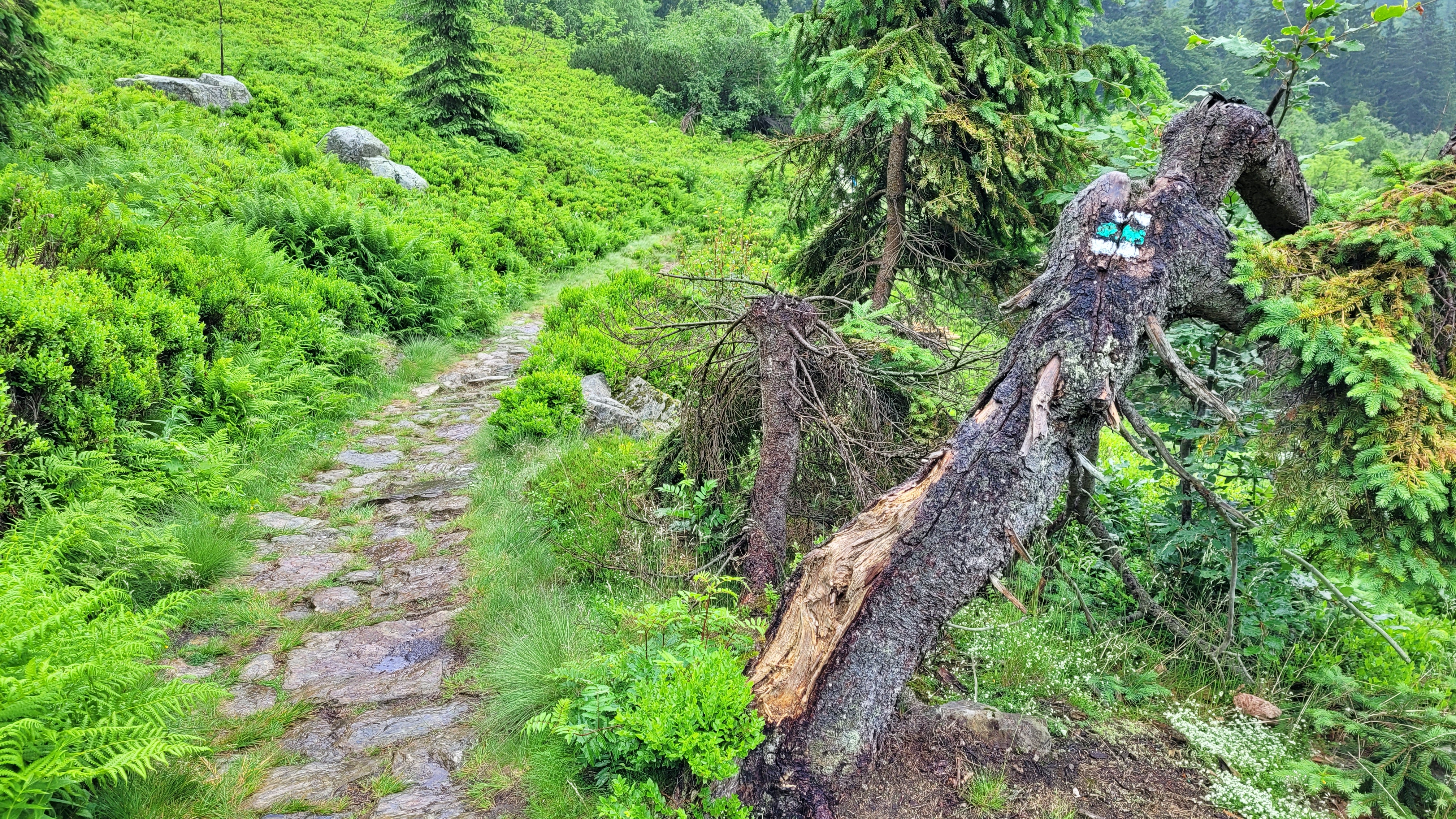
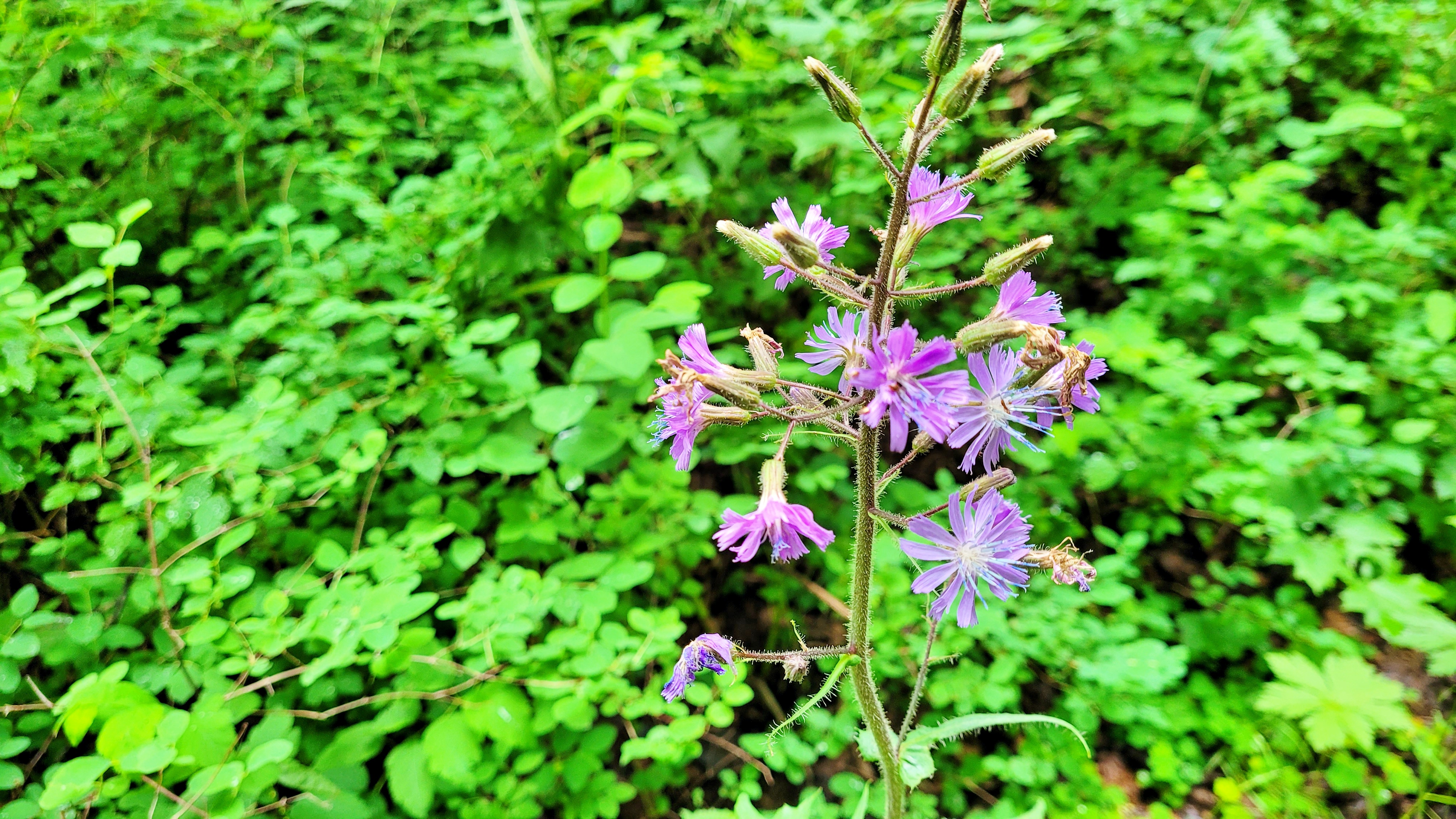
ŠPINDLERŮV MLÝN
Špindlerův mlýn is situated at an altitude of 575 – 1555 m. It is an important tourist and ski resort. The village was named after the Špindler family, who owned a mill in the village. Before that the village was called Svatý Petr. And how did today’s name originate? The citizens here asked for permission to build a church and sent it to the Emperor. It was stated on the application that the application was written in Spindleruv Mlyn. There was a mistake and the permission to build a church in the village of Špindlerův mlýn was returned. The citizens therefore preferred to rename the village in order to build. Sending in a new application could be seen as an insult to the infallible authority and the church would certainly not stand there.

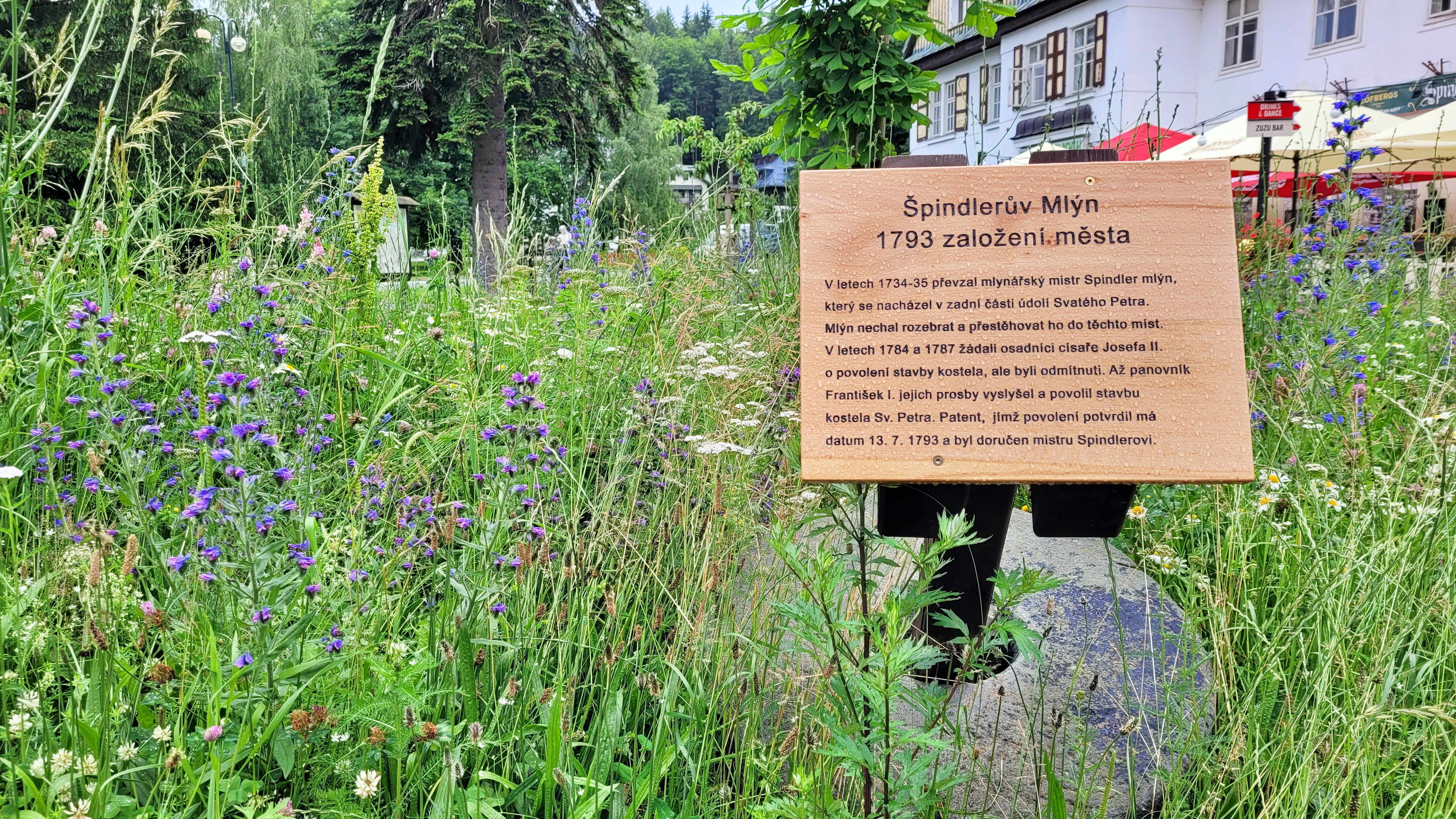
MILLER’S CIRCUITS
In Špindlerův Mlýn, be sure not to miss one of the Mlynář’s circuits that will take you across the town. They take you through the countryside off the roads and you will learn all about the history of the town.




THE WAY ŠPINDLERŮV MLÝN – PEC POD SNĚŽKOU
Length: 11,5 km
This part of the route is very nice. Almost all the time there are very nice views of the surrounding countryside, which is really beautiful.
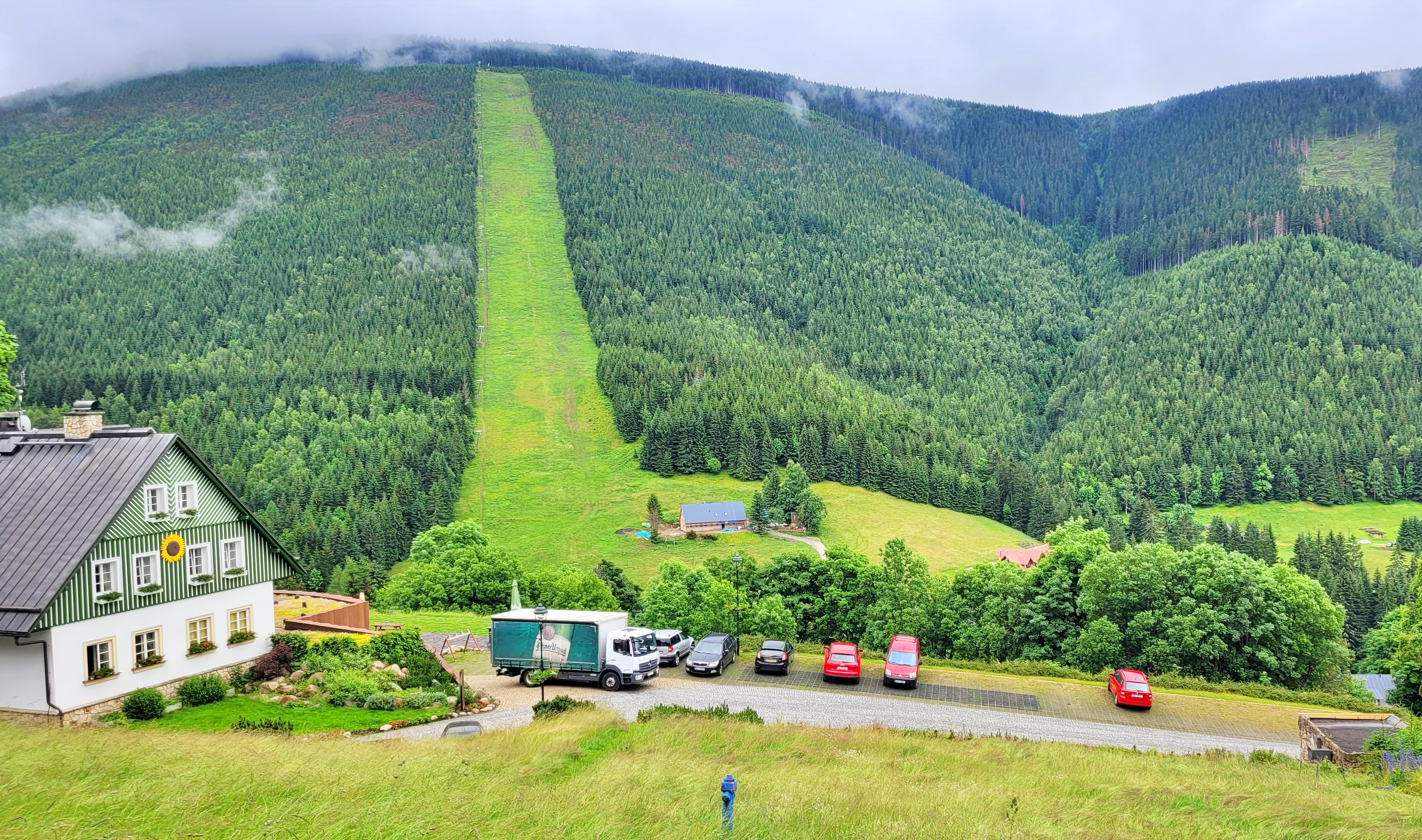
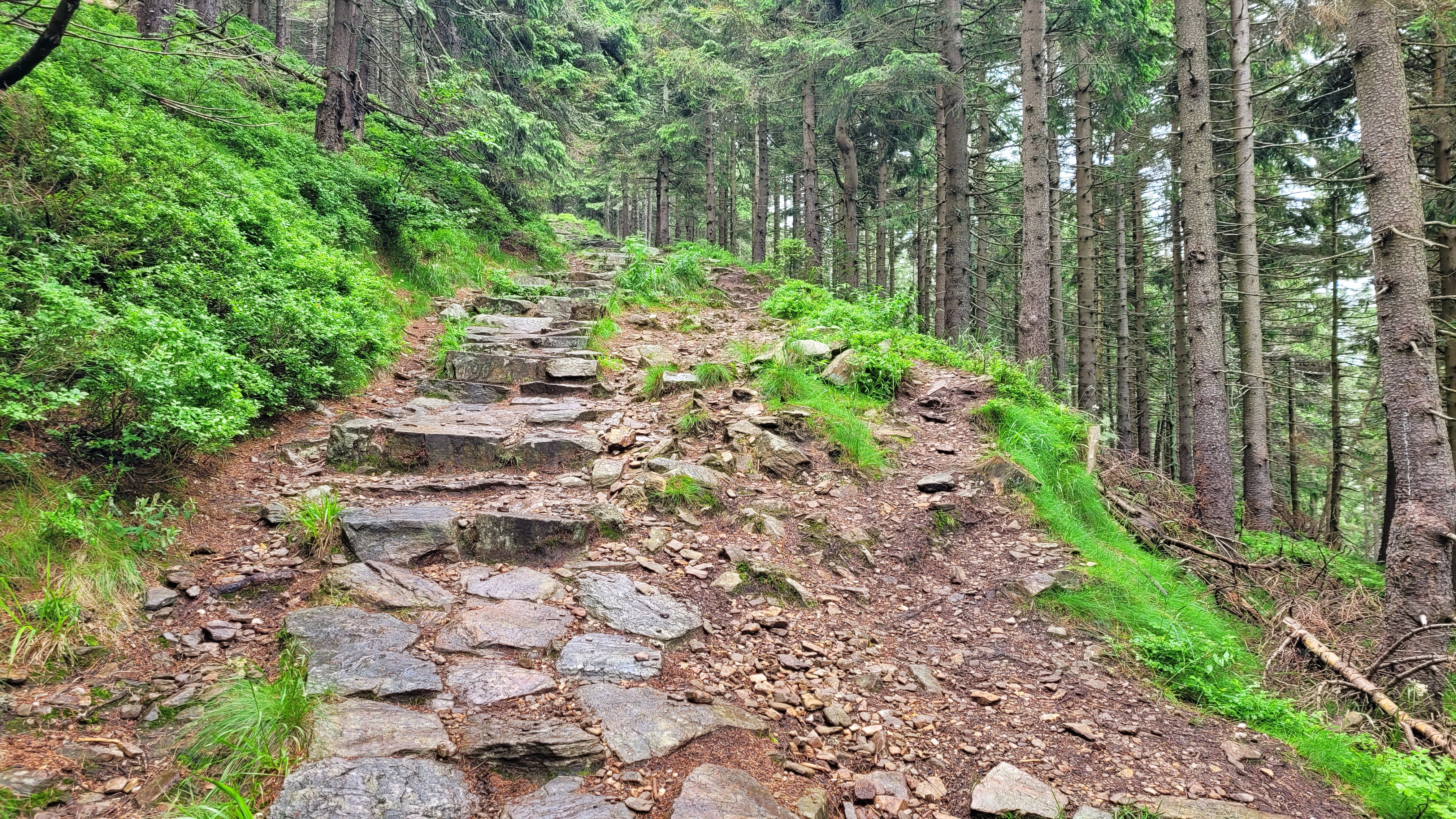
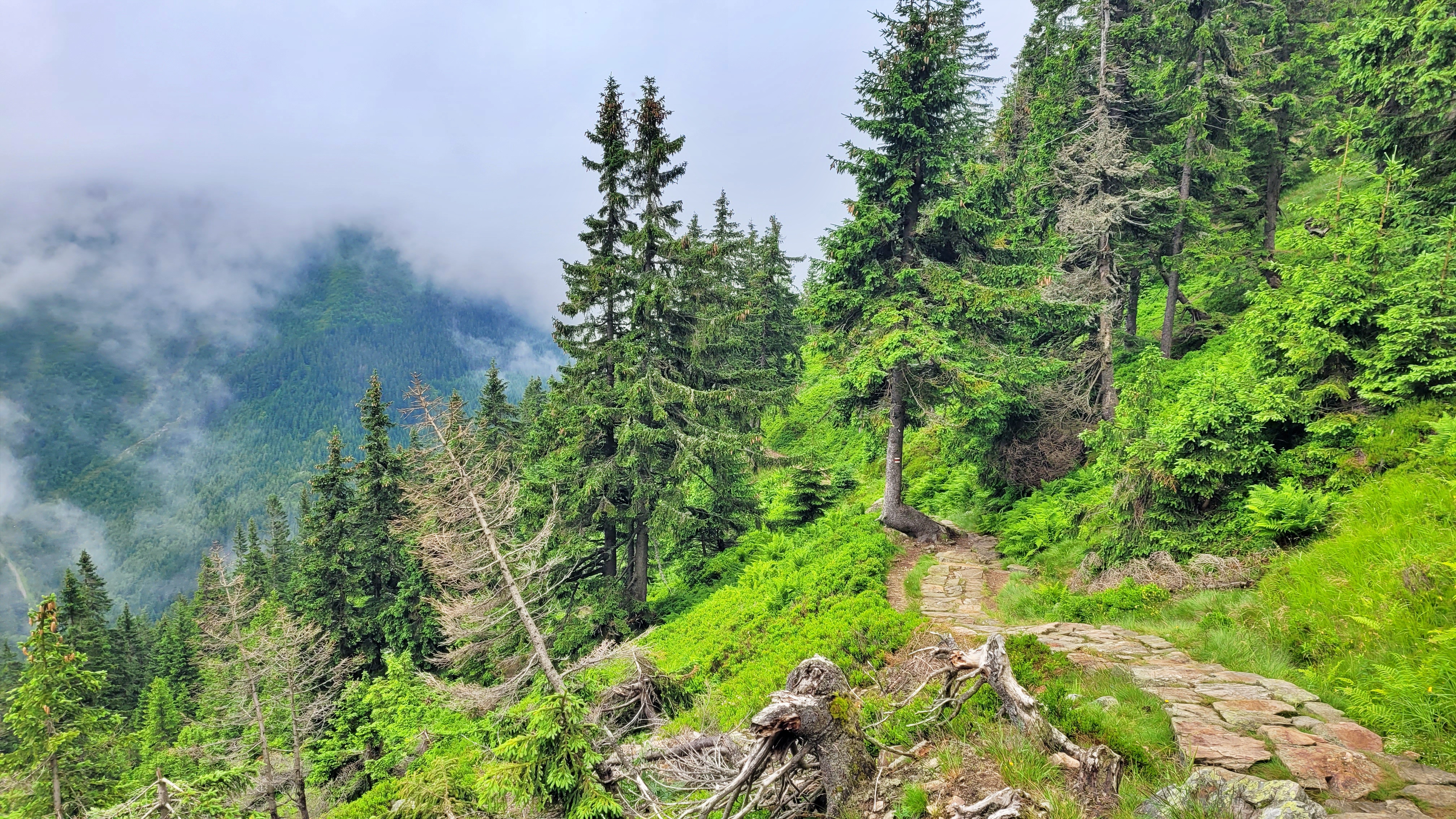

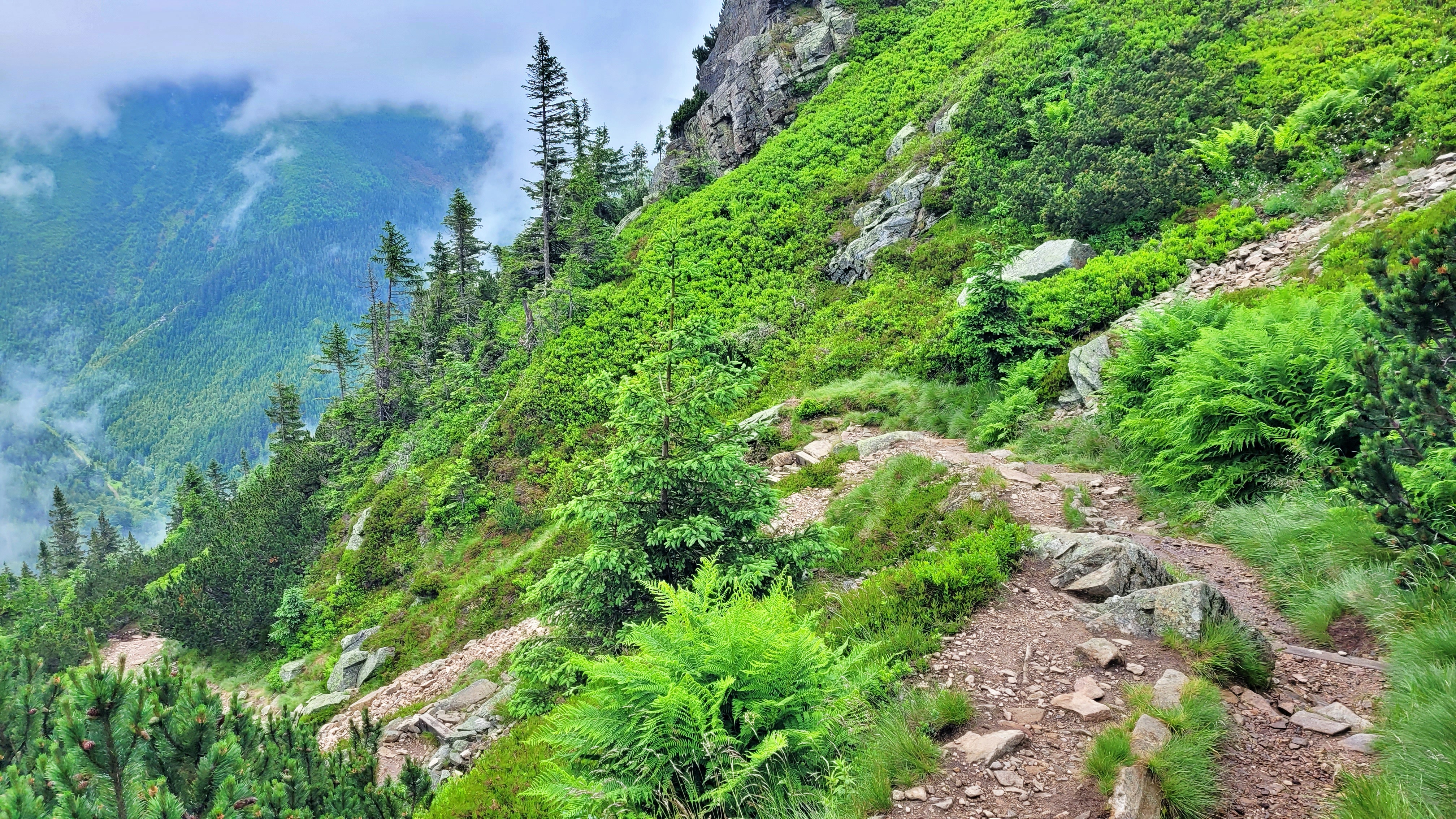

KOZÍ HŘBETY (THE GOAT RIDGES)
One of the most beautiful mountain ridges in the Krkonoše National Park is the Goat Ridges. From here you have a very impressive view of the western Krkonoše. The steep 3 km long ridge stretches from Špindlerův mlýn to Luční bouda. You will not come across any huts or chalets on the way. In the 16th and 17th centuries, copper and silver ore was mined here.
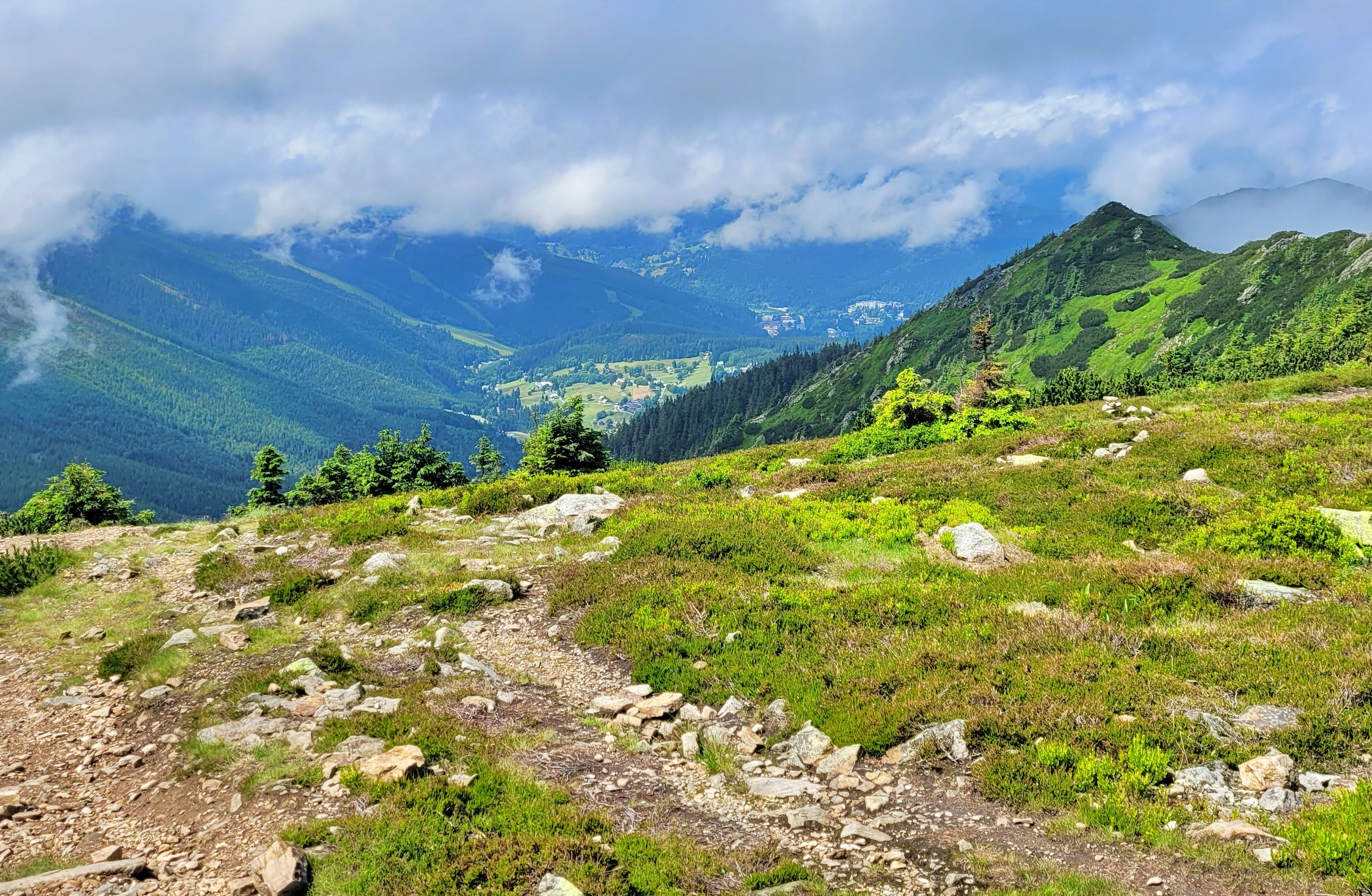
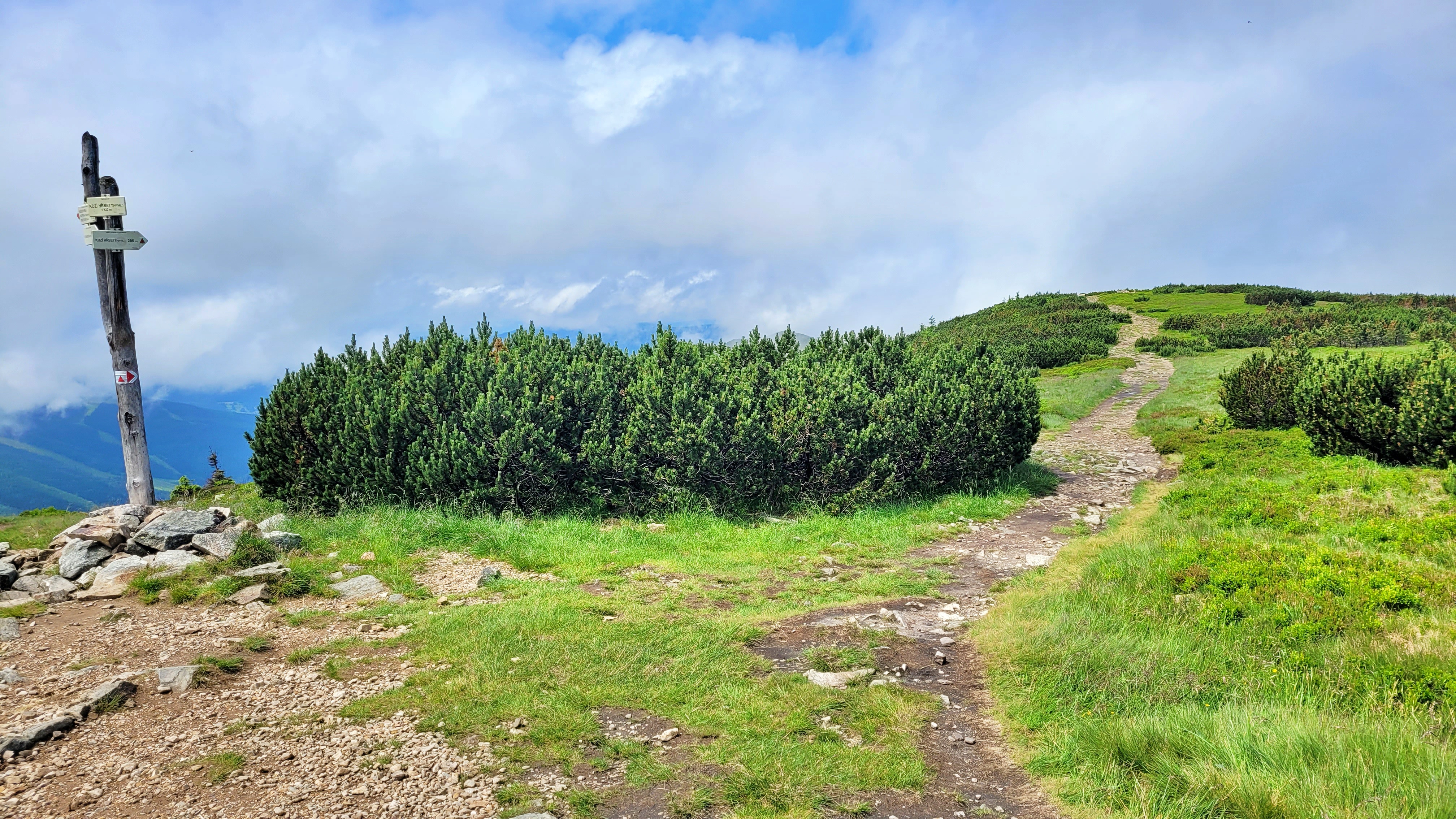
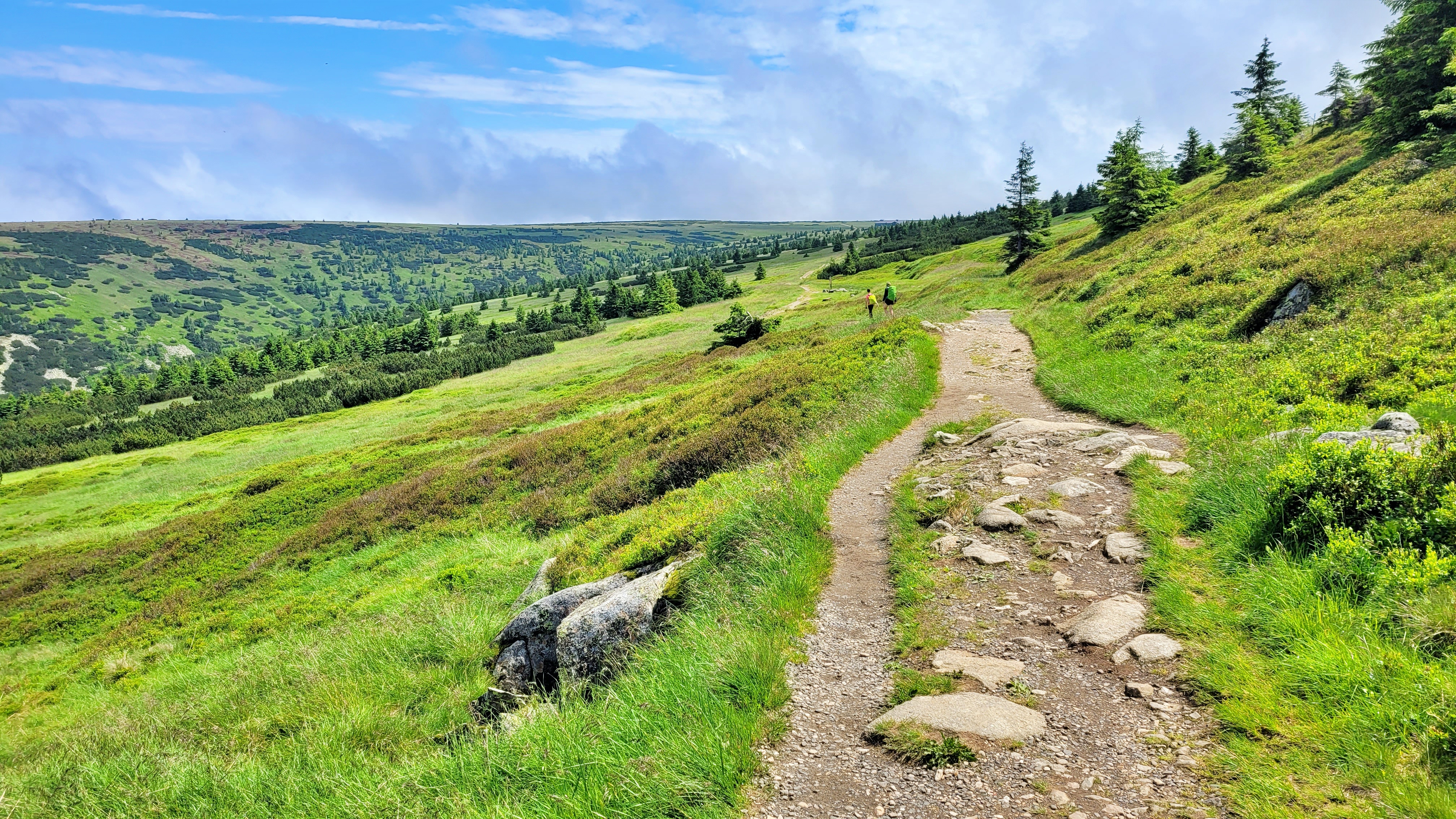
RENNEROVA BOUDA (RENNER’S HUT)
The path leads past the now defunct mountain hut, which was built in 1797 but burnt down in 1938. It was the second highest mountain hut in the Czech Krkonoše Mountains after the hut on Sněžka.
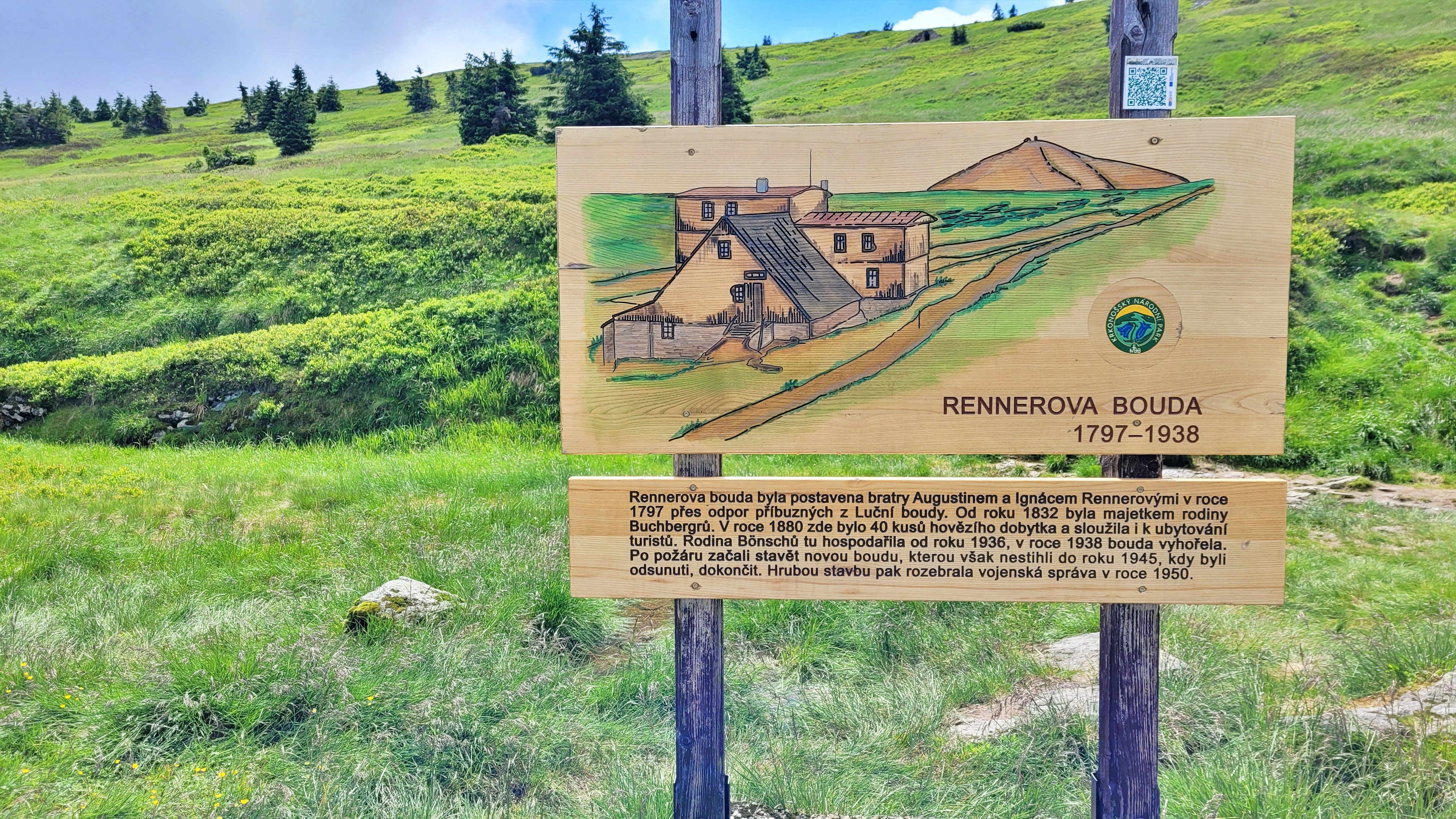
LUČNÍ BOUDA (LUNAR HUT)
Luční bouda is located at an altitude of 1410 m above sea level.Luční bouda, which has existed in various variations since the 17th century, is the oldest mountain hut on the ridges of the Krkonoše Mountains and one of the largest in Europe. It has burned down several times throughout its history and has always been rebuilt and extended. Gradually, it has become an important economic, commercial, research and tourist centre. The source of livelihood was cattle breeding, hay harvesting from the surrounding meadows and later also tourist visits due to the proximity of Sněžka. The local speciality was mountain herbal cheese.
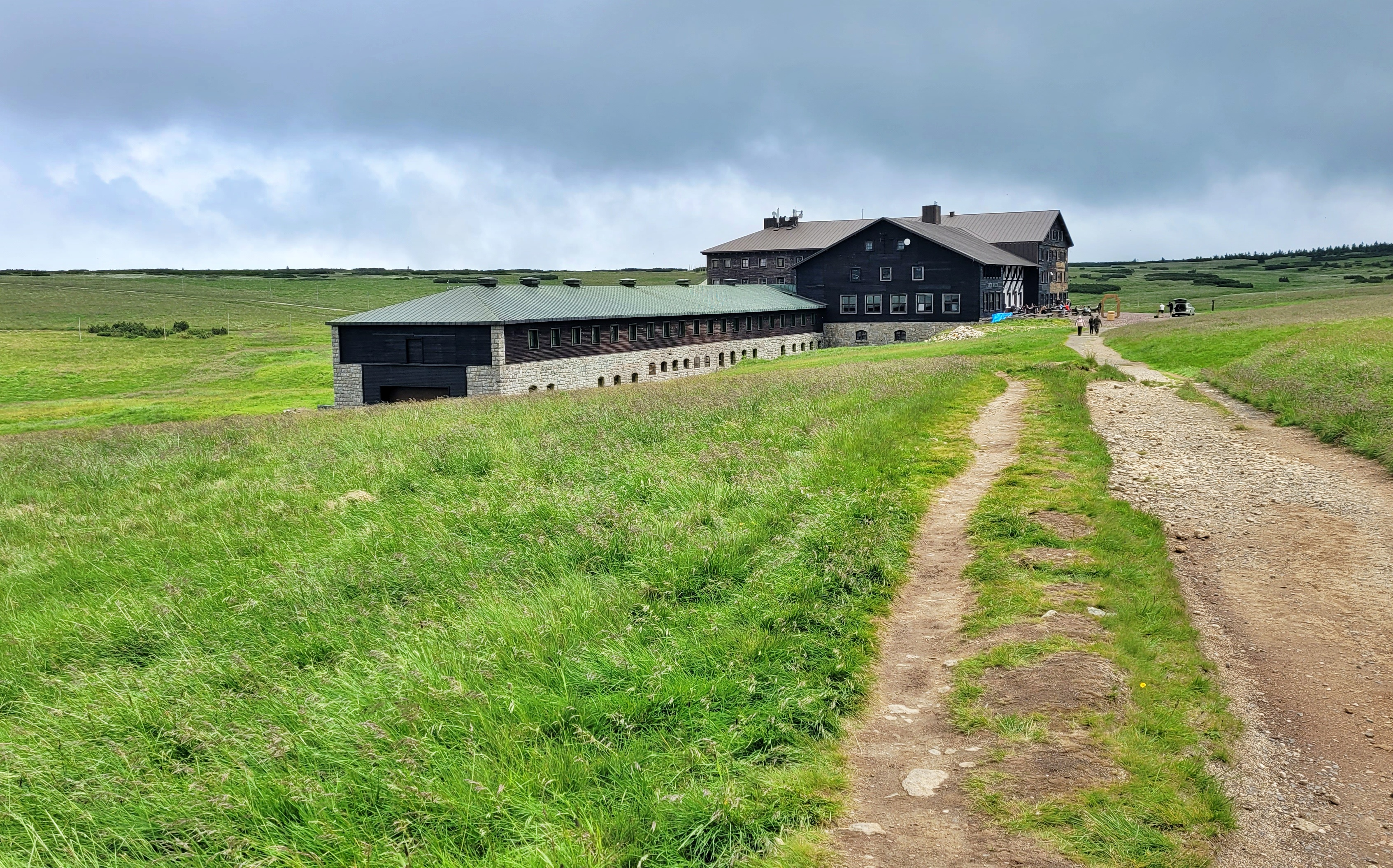
During World War II, the hut was restored by the German Wehrmacht and used for training of airwomen. After the war the cottage was used by the Czechoslovak army. Later the cottage belonged to the Czech Tourist Club. Today the hut belongs to the AEZZ company from Prague. There is a microbrewery with a beer spa where the Paroháč brand of beer is brewed. It is the highest brewery in Central Europe.
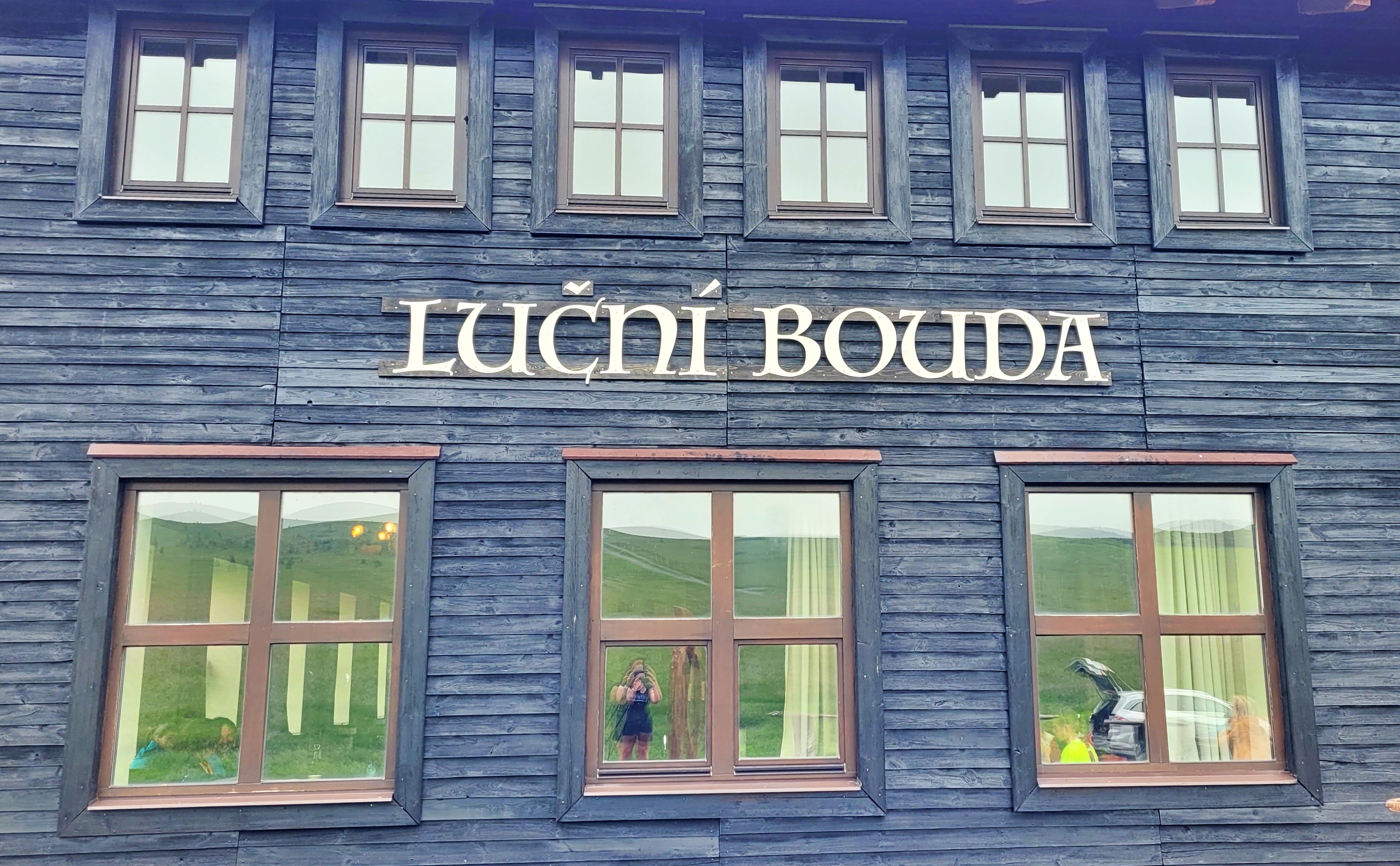
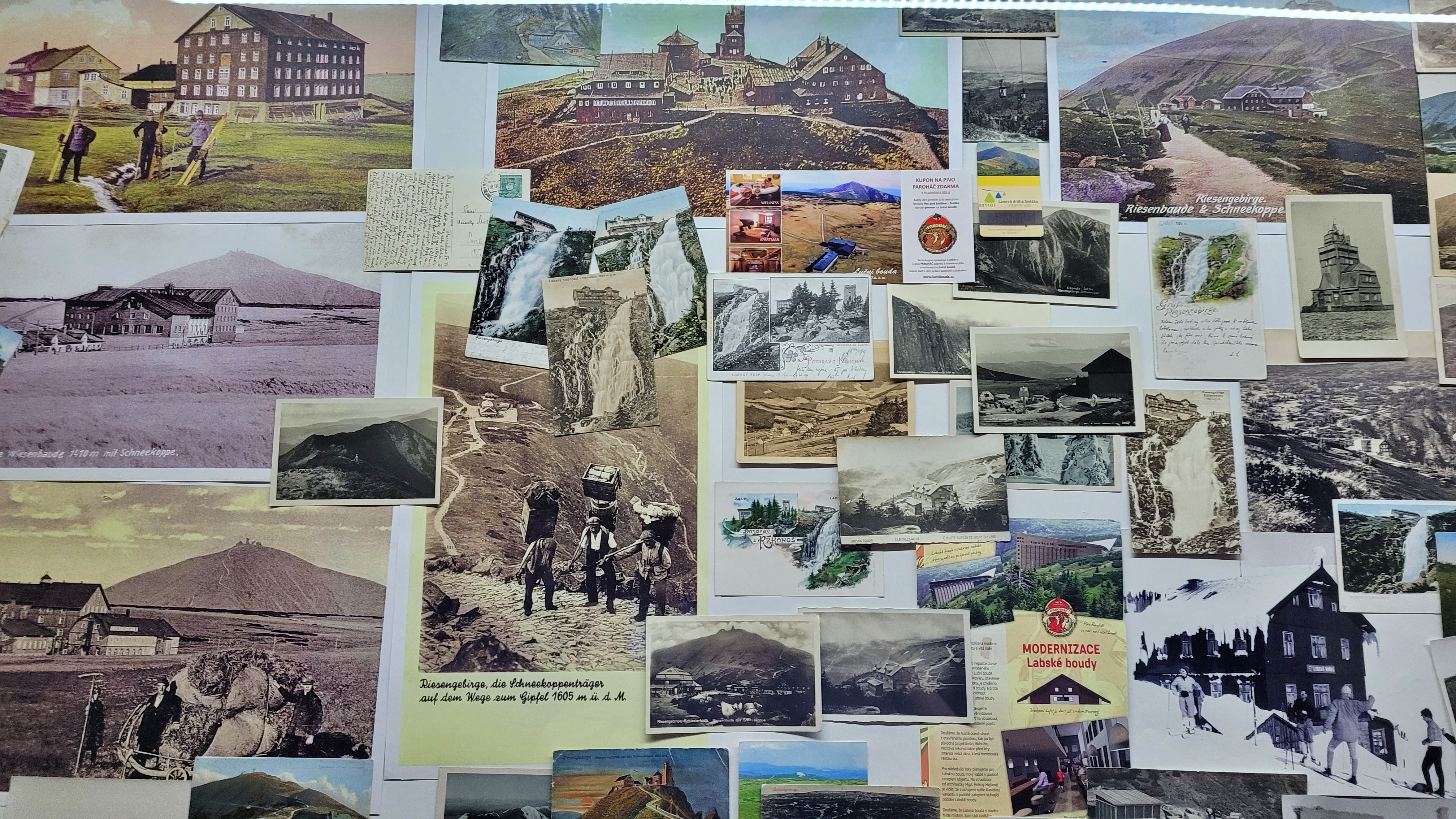


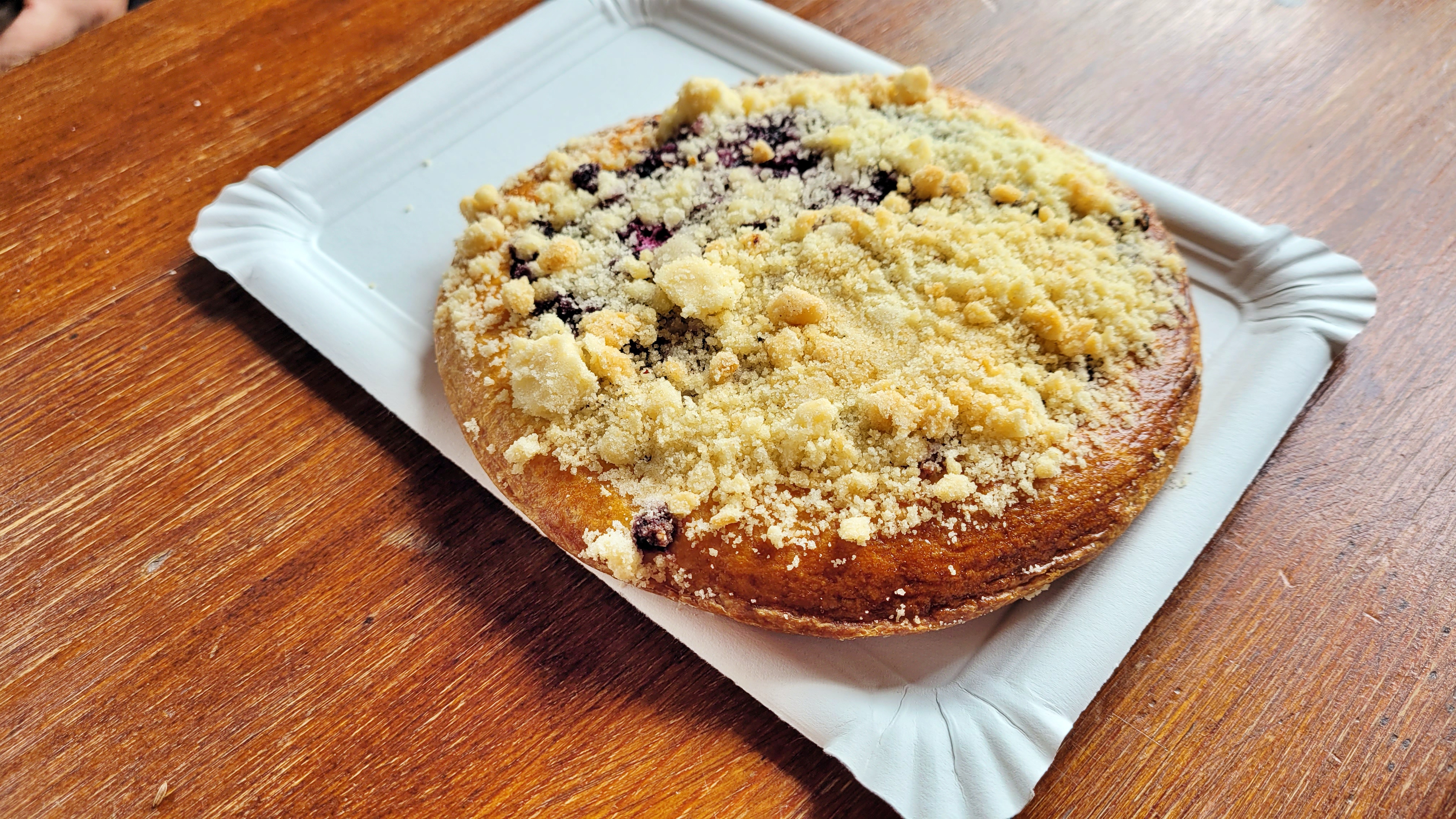
CAPS
MEMORIAL TO THE VICTIMS OF THE KRKONOŠE MOUNTAINS
Here in the Krkonoše Mountains is the harshest climate in Central Europe. These are mountains with ridges 1 km above the surroundings. Nothing protects them from the constant moist winds from the North Sea. Often someone freezes to death here. The chapel was built in honour of Václav Renner, who tragically died here in 1798.

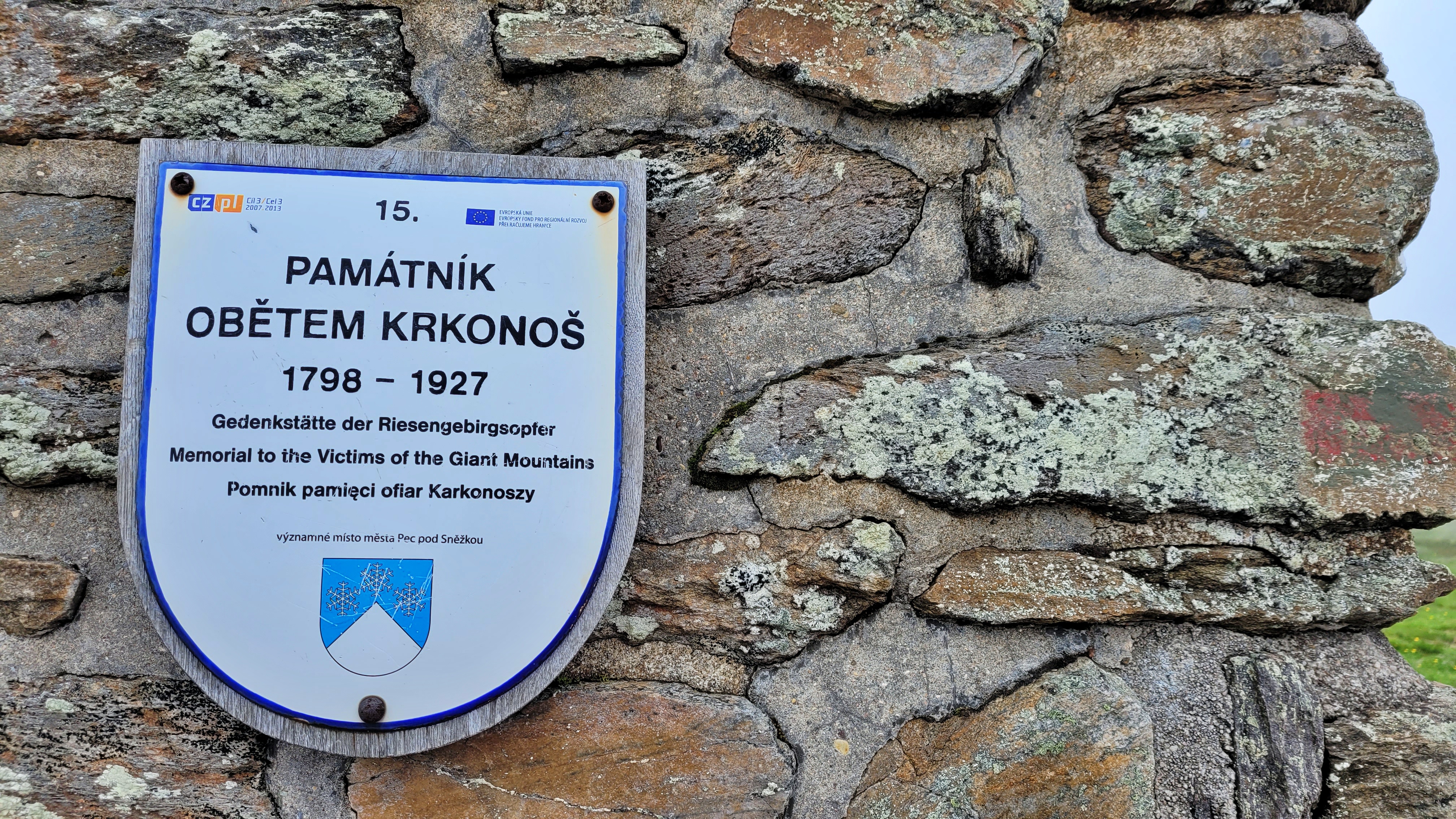
RICHTROVY BOUDY (RICHER’S HUTS)
On the way, we pass a complex consisting of two buildings – Richtrova and Červená bouda. These are the property of the Police Presidium and are no longer open to the public. Before its closure, the Richter’s huts below Výrovka, in the direction of Pec under the massif of the Broad Ridge, served mainly as a training and recreation centre for teaching staff, outdoor schools, ski courses and retreats. The area was also used for training and as a training facility by the Mountain Service.
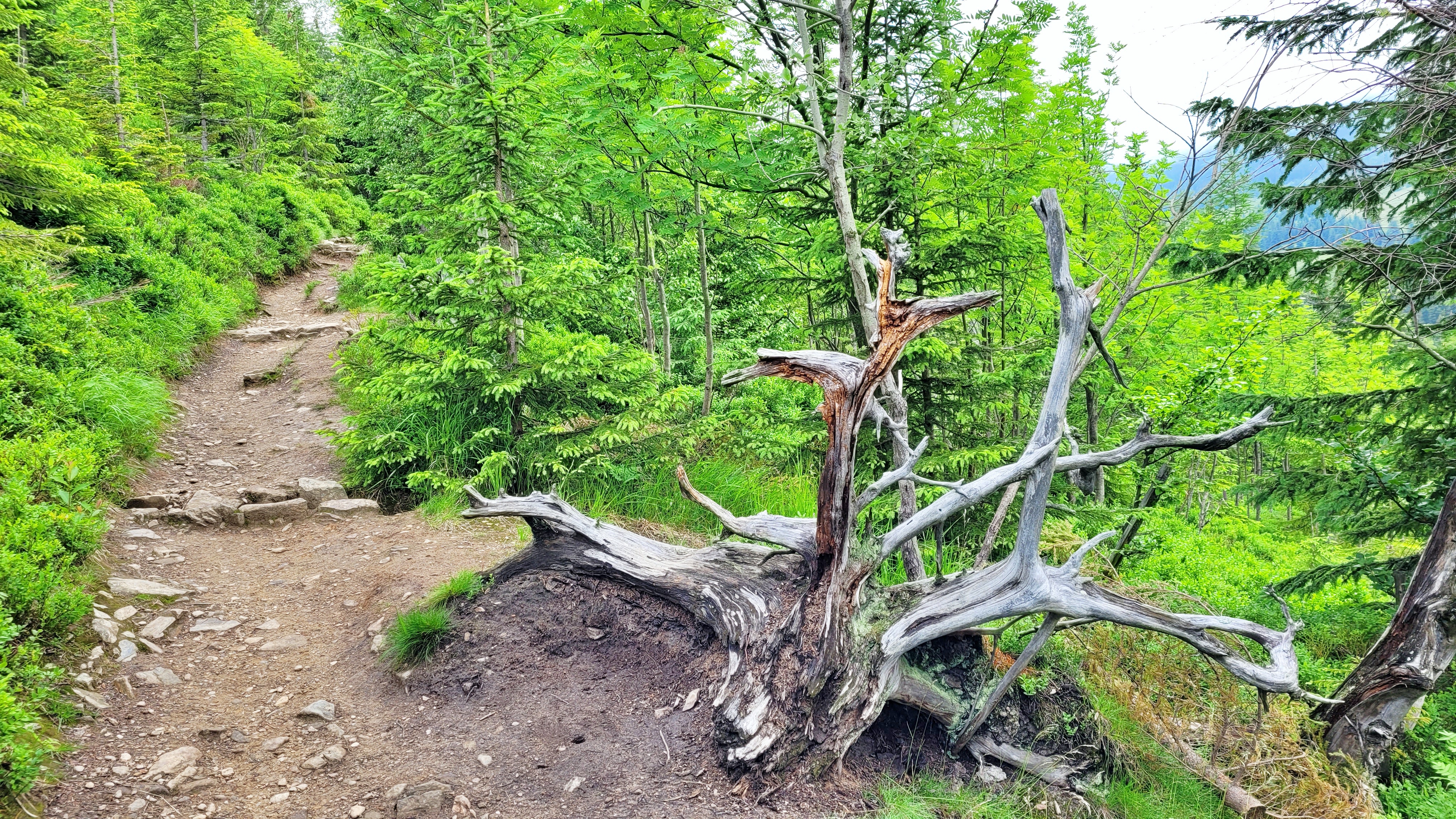

PEC POD SNĚŽKOU
Our next stop is the town of Pec pod Sněžkou, which is one of the most important mountain resorts. It is surrounded by many mountains and hills. Pec itself was founded at the end of the 16th century, then as the third part of Velká Úpa. It owes its origin to extensive logging for the needs of the Kutná Hora mines. Woodcutters from Styria, Carinthia and Tyrol were called to the Krkonoše Mountains and built dwellings (called huts) and raised cattle and goats in the resulting clearings.
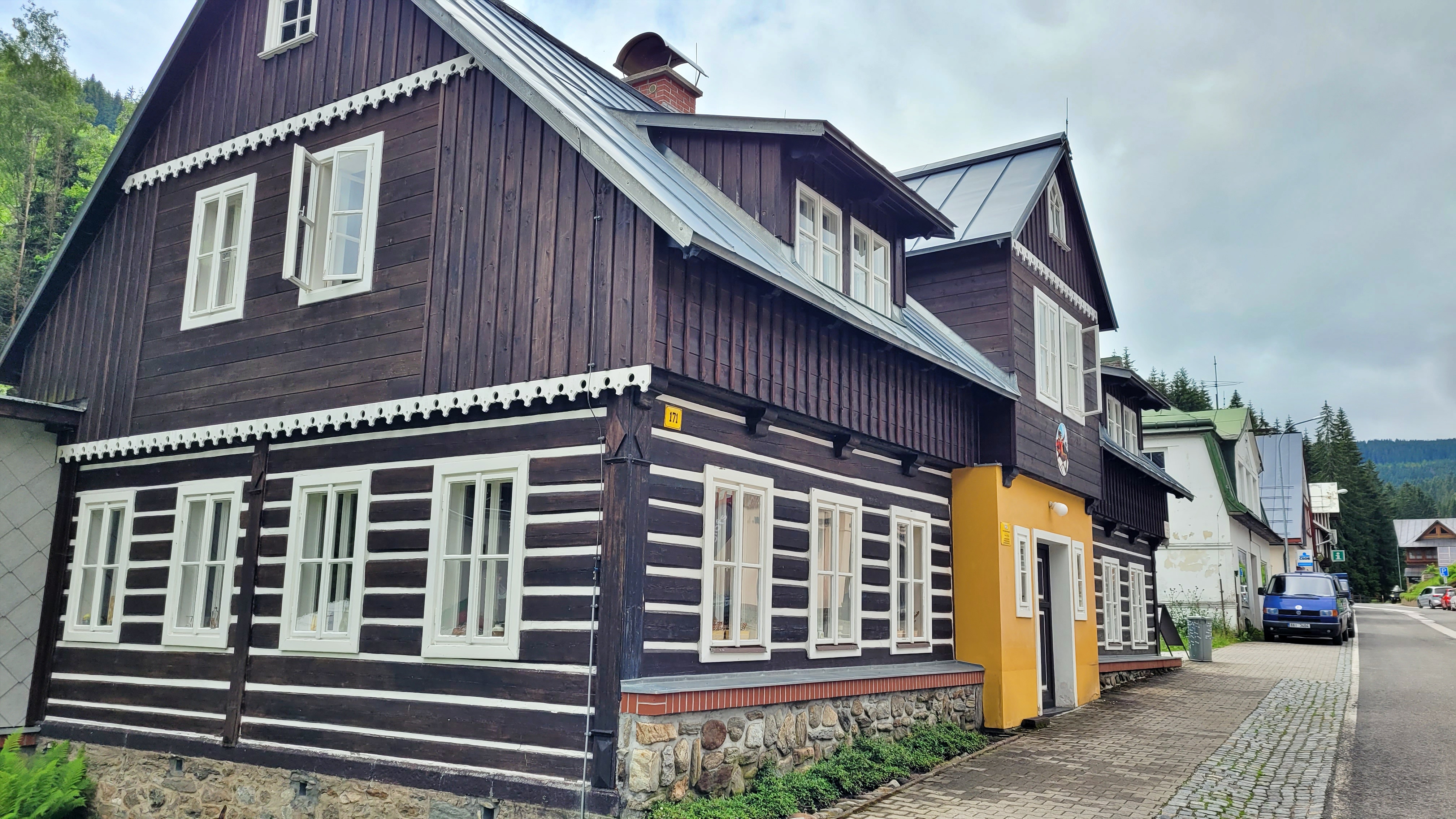
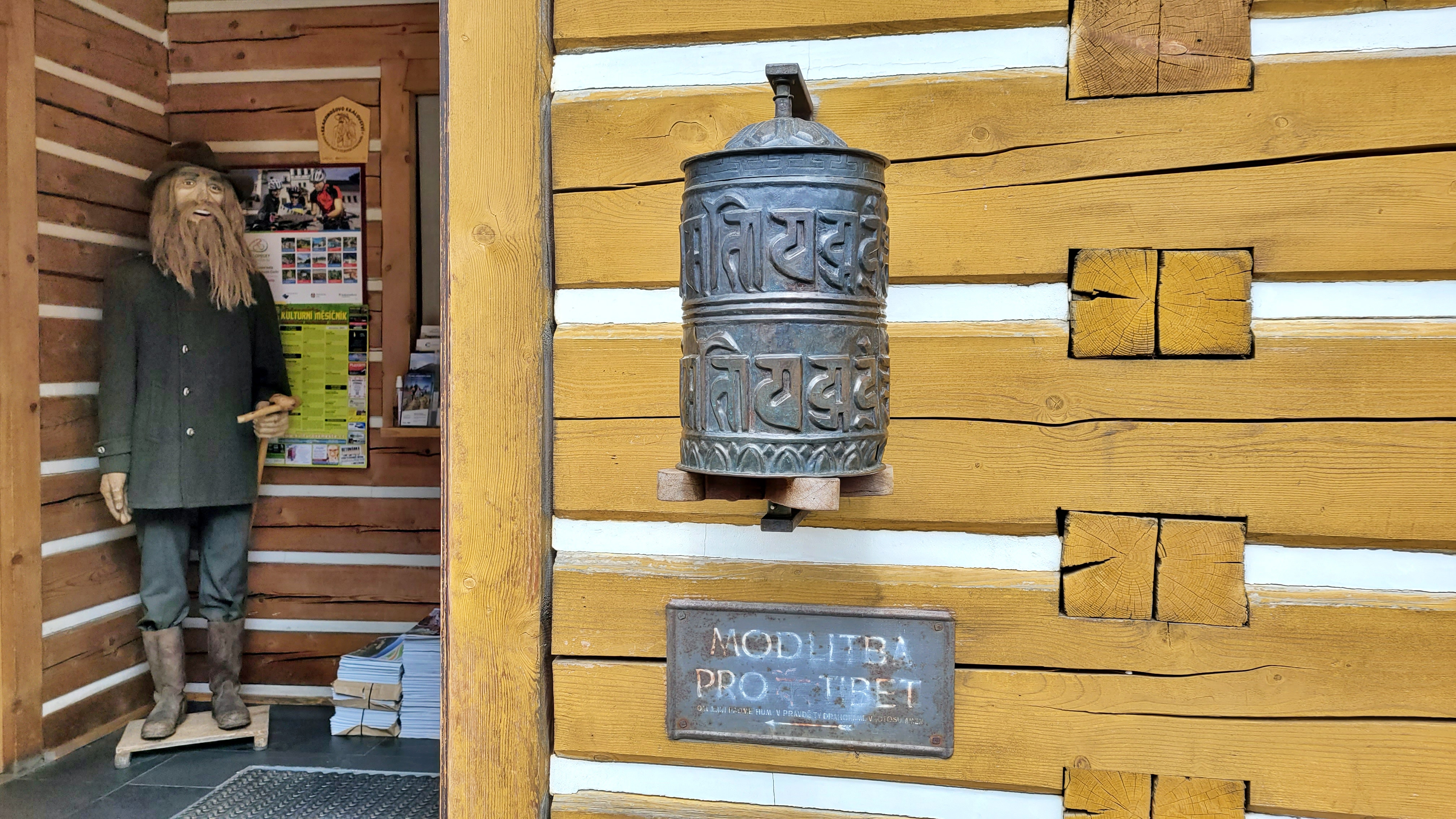
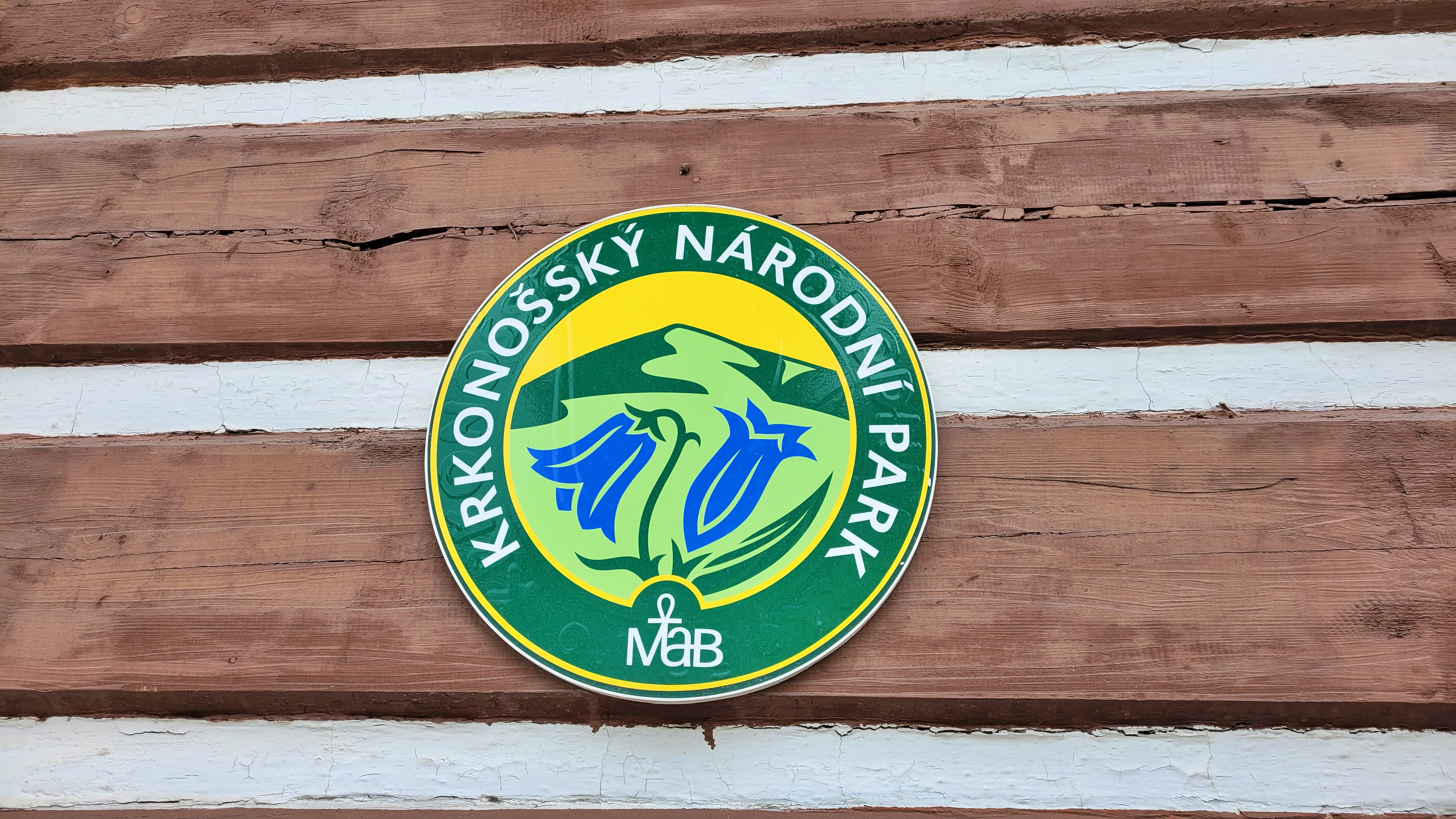
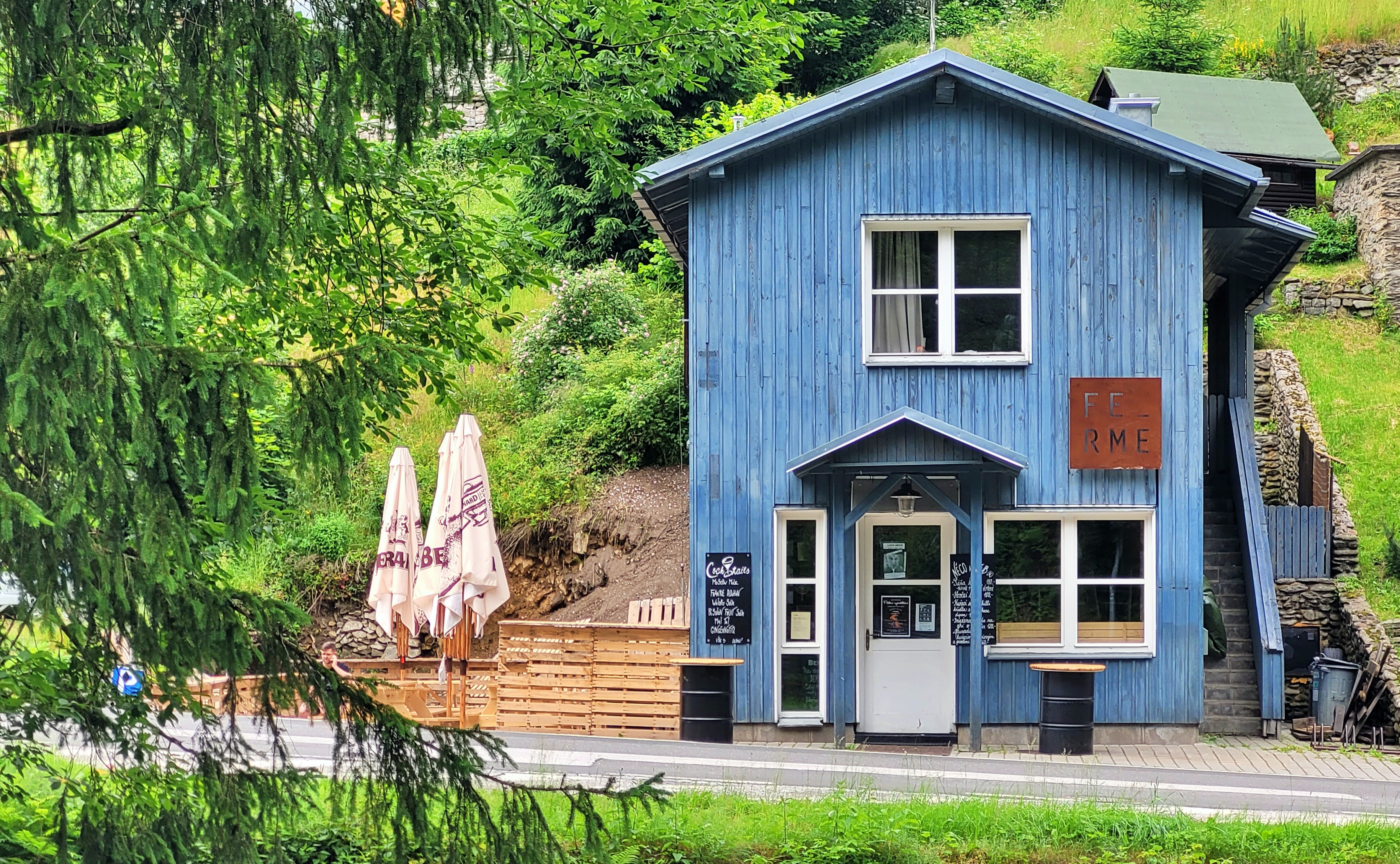
The development of tourism in the second half of the last century gave settlers a new source of livelihood. At first, they provided tourists with accommodation in hay fields, but later they adapted their dwellings to rent out rooms, thus creating cottages, guesthouses and hotels.

VLČÍ JÁMA A TEMNÁ BYSTŘINA (THE WOLF PIT AND THE DARK GORGE )
Length of route: 5 km
In the ice ages, this was the core of the Wolf Mine glacier, which slowly flowed into the valley under the pressure of other layers of snow and ice. The glacier excavated a pit, technically known as a glacial kar.
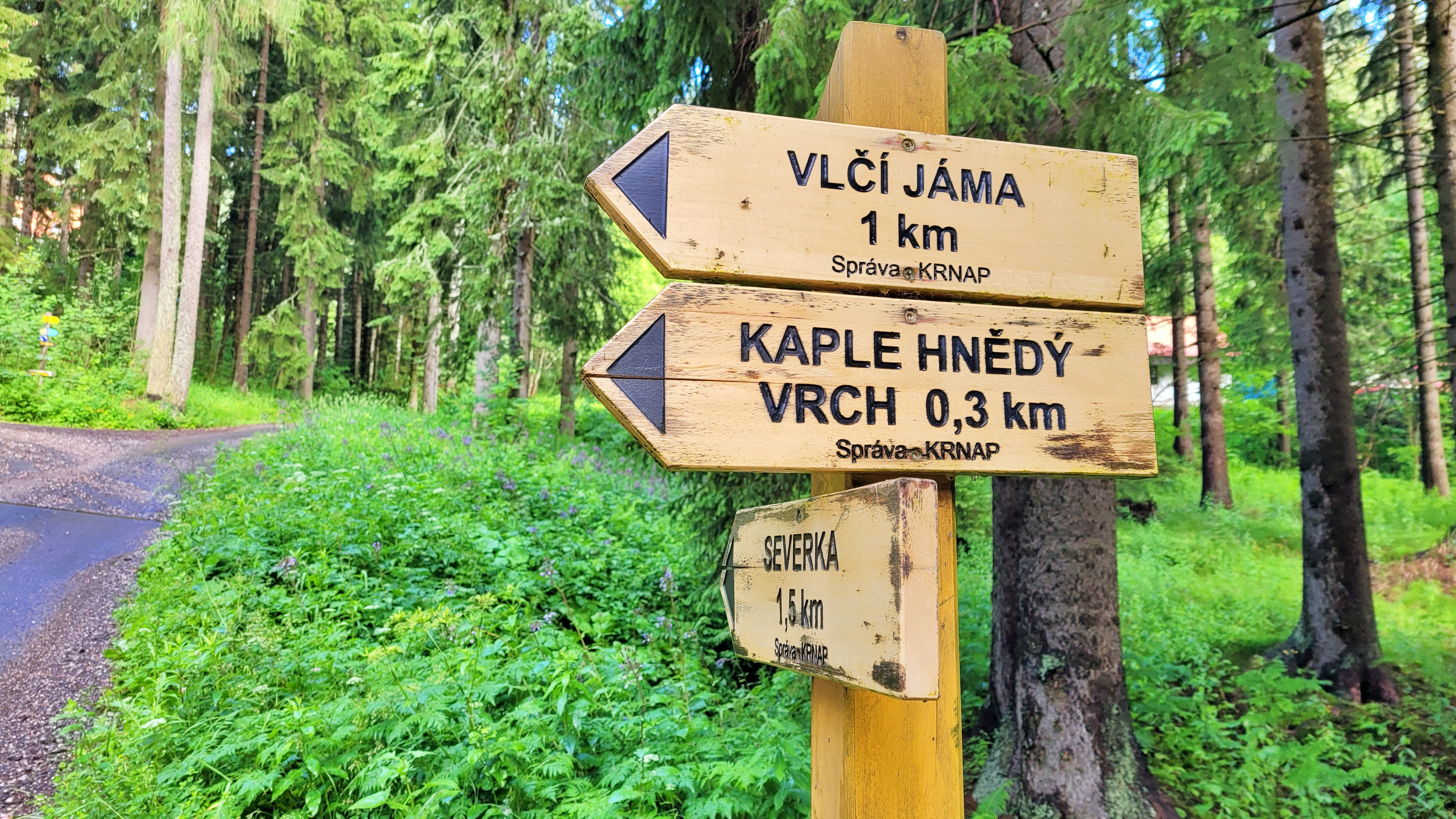
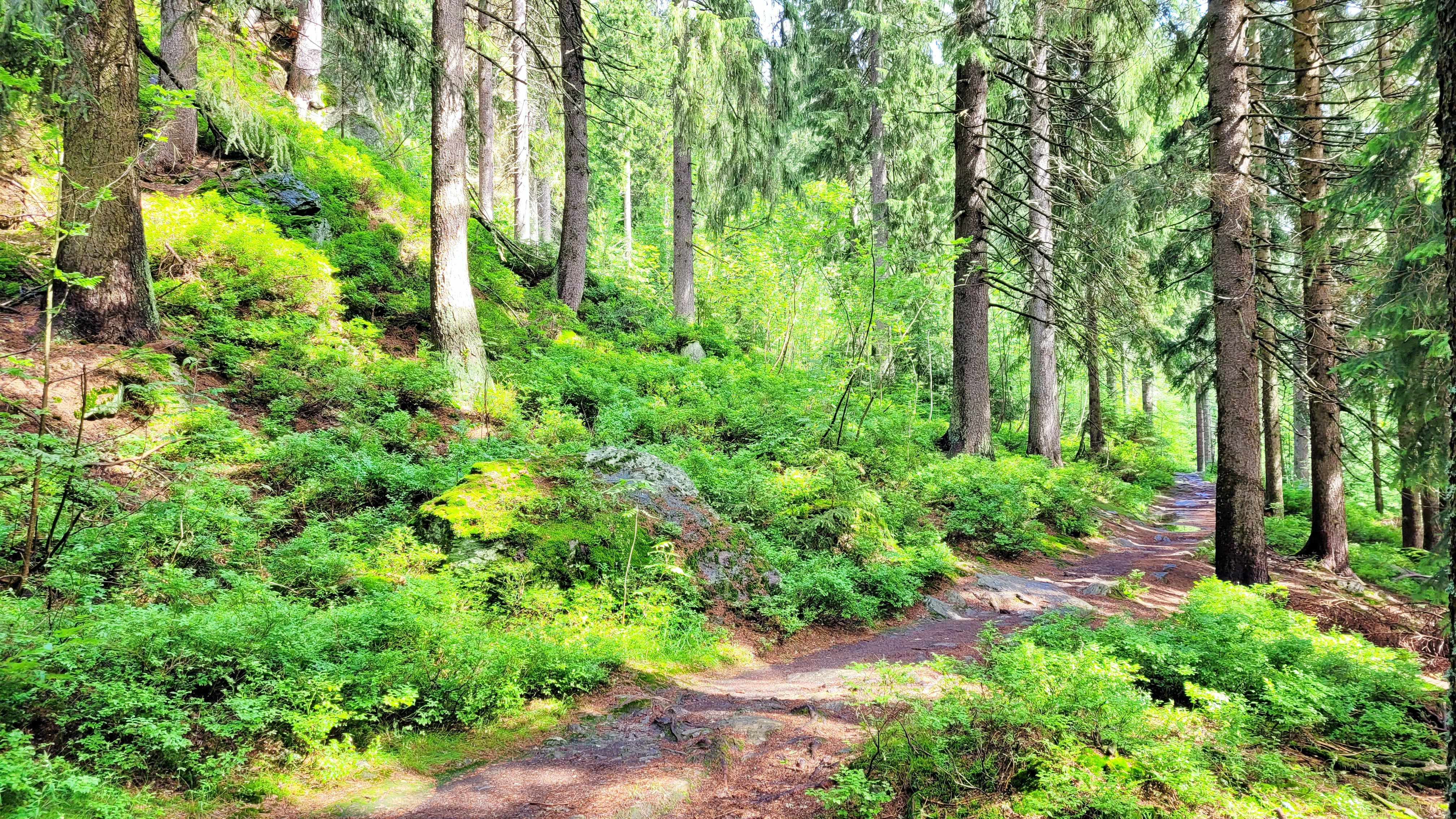

The steeply falling mountain stream divides into two channels through which the water flows at different heights.
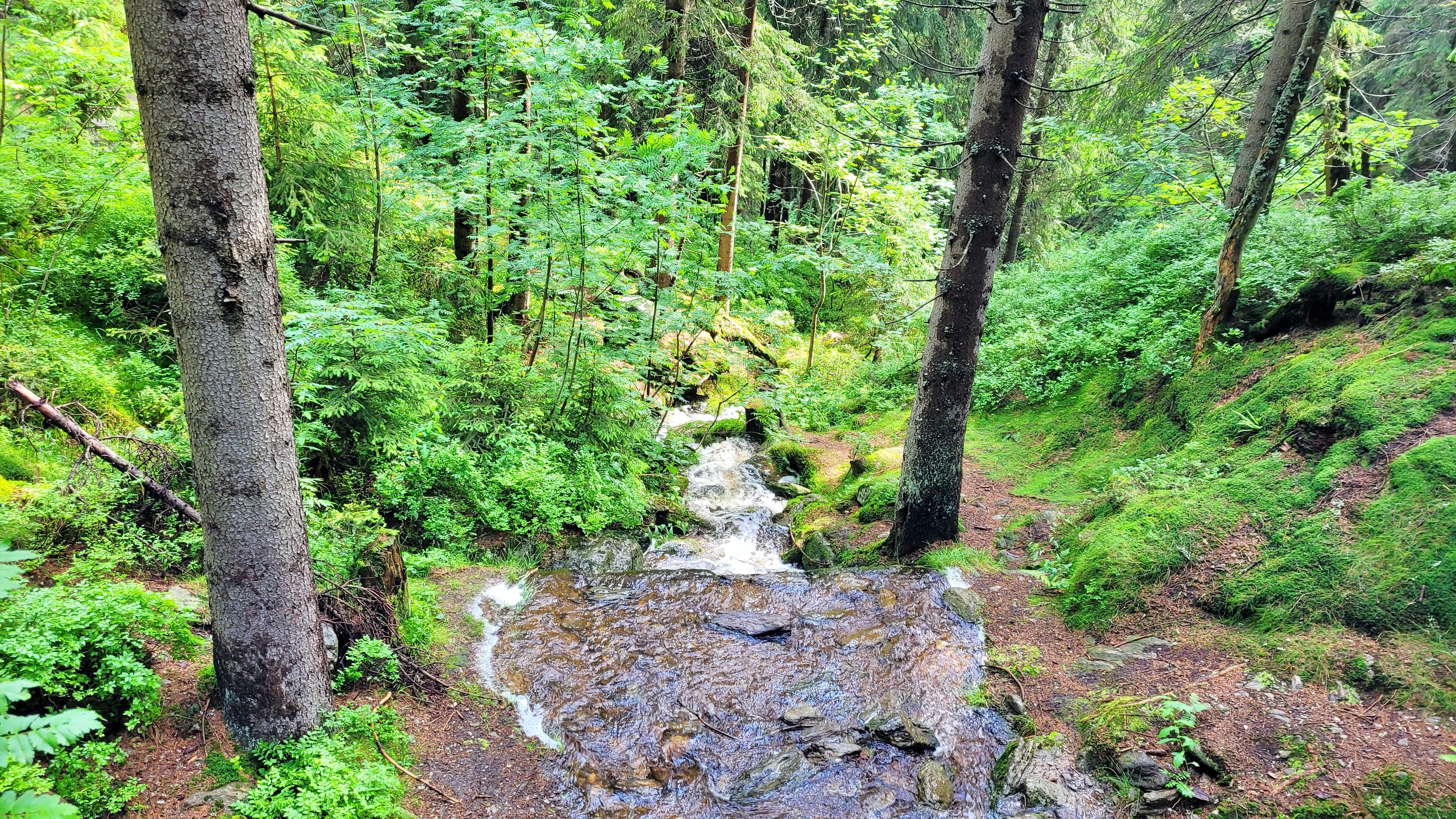

FROM PEC POD SNĚŽKOU DIRECTLY TO THE SNĚŽKA
Who would not know Sněžka, the highest mountain in the Czech Republic, which dominates the Krkonoše Mountains. As the name of the mountain suggests, the name Sněžka is related to the appearance of the snow-covered hill. Various hiking trails lead to Sněžka. I originally thought I would take the cable car to the top, but I wouldn’t have had the good feeling of actually climbing the mountain. So I choose the option via the Růžohorky. The route is approximately 6.5 km long. The path leads first along the green marked trail. You will climb for about 1 km on a rocky forest path until you reach the signpost for Pod Větrníkem (920 m above sea level). Then the path continues along the green marking. After 2 km you will climb to Růžohorky (1260 m above sea level). There are two tourist huts here. Děčínská bouda and Bouda Růžohorky, where you can refresh yourself.


MOUNTAIN HUT RŮŽOHORKY
The lodge was built in 1903 as an inn with the original name of Leischner’s Lodges. It served as today for refreshment of tourists on their way to Sněžka from Pec pod Sněžkou or Velká Úpa. Since 1945 it has been known as Růžohorky. Today it is a mountain chalet situated 1280m above sea level in a really beautiful environment. The chalet offers typical blueberry dumplings, fluffy blueberry cakes or pancakes.


TOP OF THE SNĚŽKA
From the Růžohorky signpost, the path to Sněžka is still 3.5 km long and follows the yellow markings. On the way I pass the cable car station on the right side. After 2.5 km you will reach another signpost Nad Růžohorským sedlem. Then the last kilometer climb up the big stairs follows. The disadvantage is that on the way I pass crowds of people who have climbed to the top themselves or have come here by cable car. At the end you have a slightly steeper climb to the top.

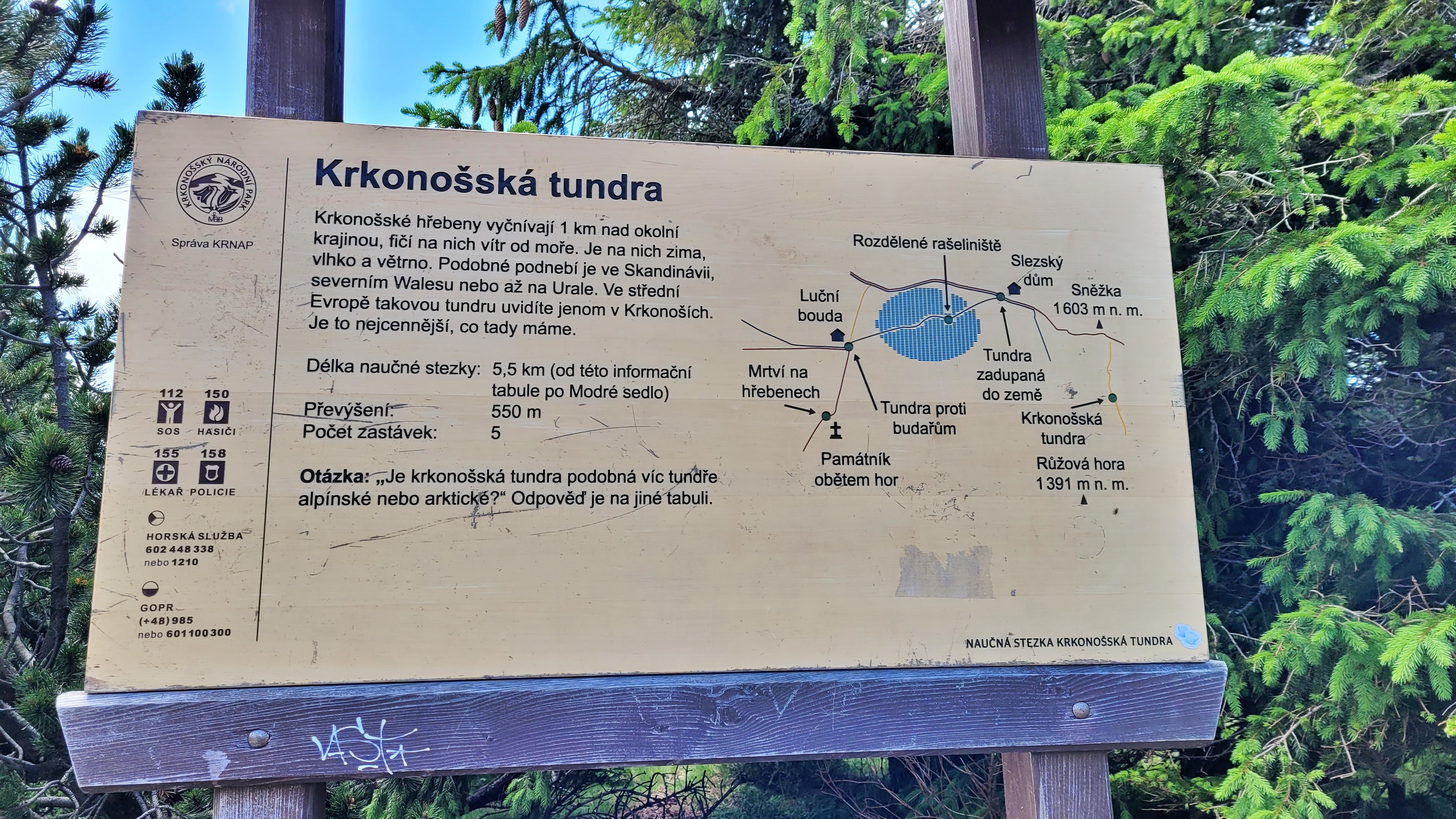


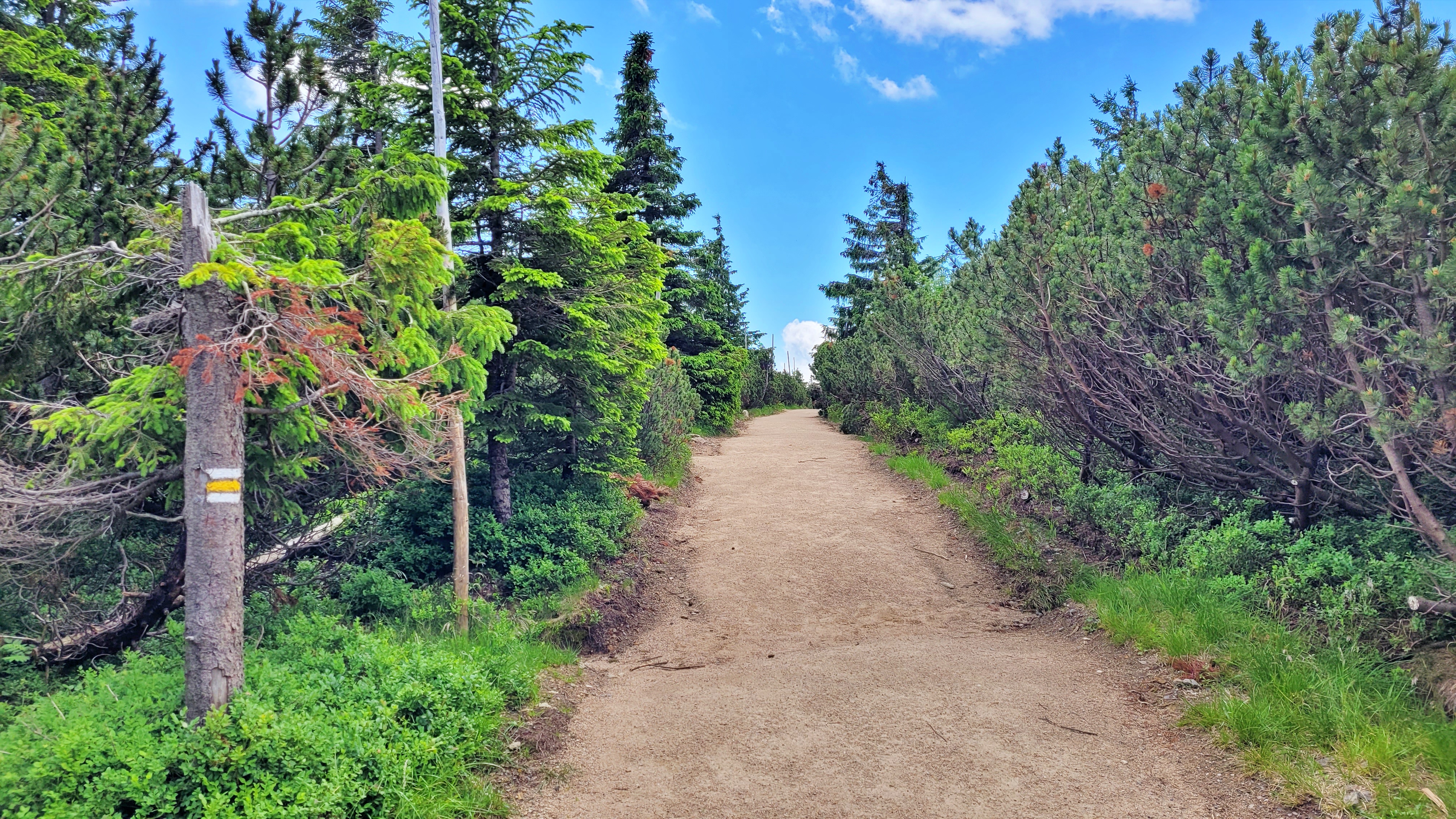
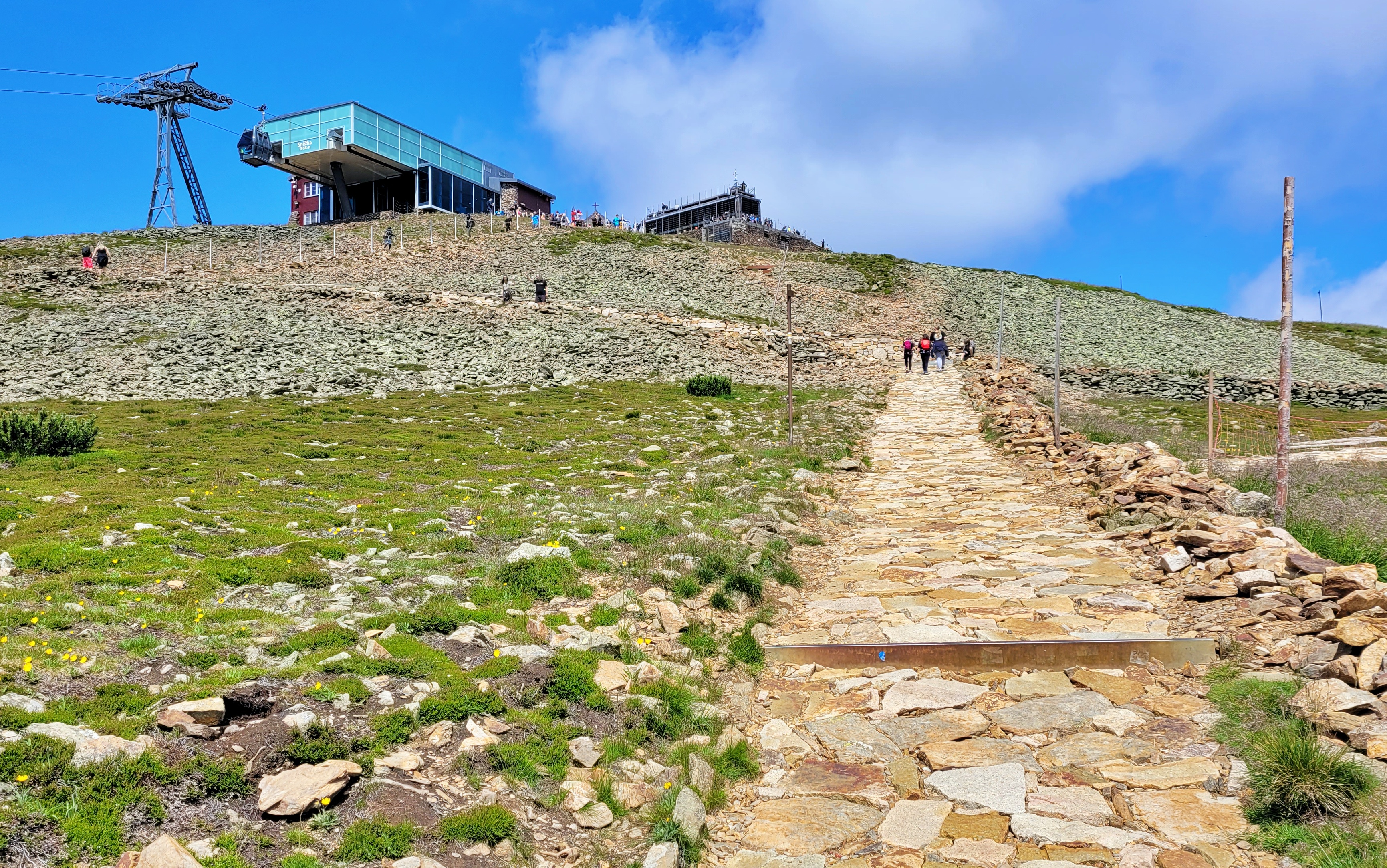
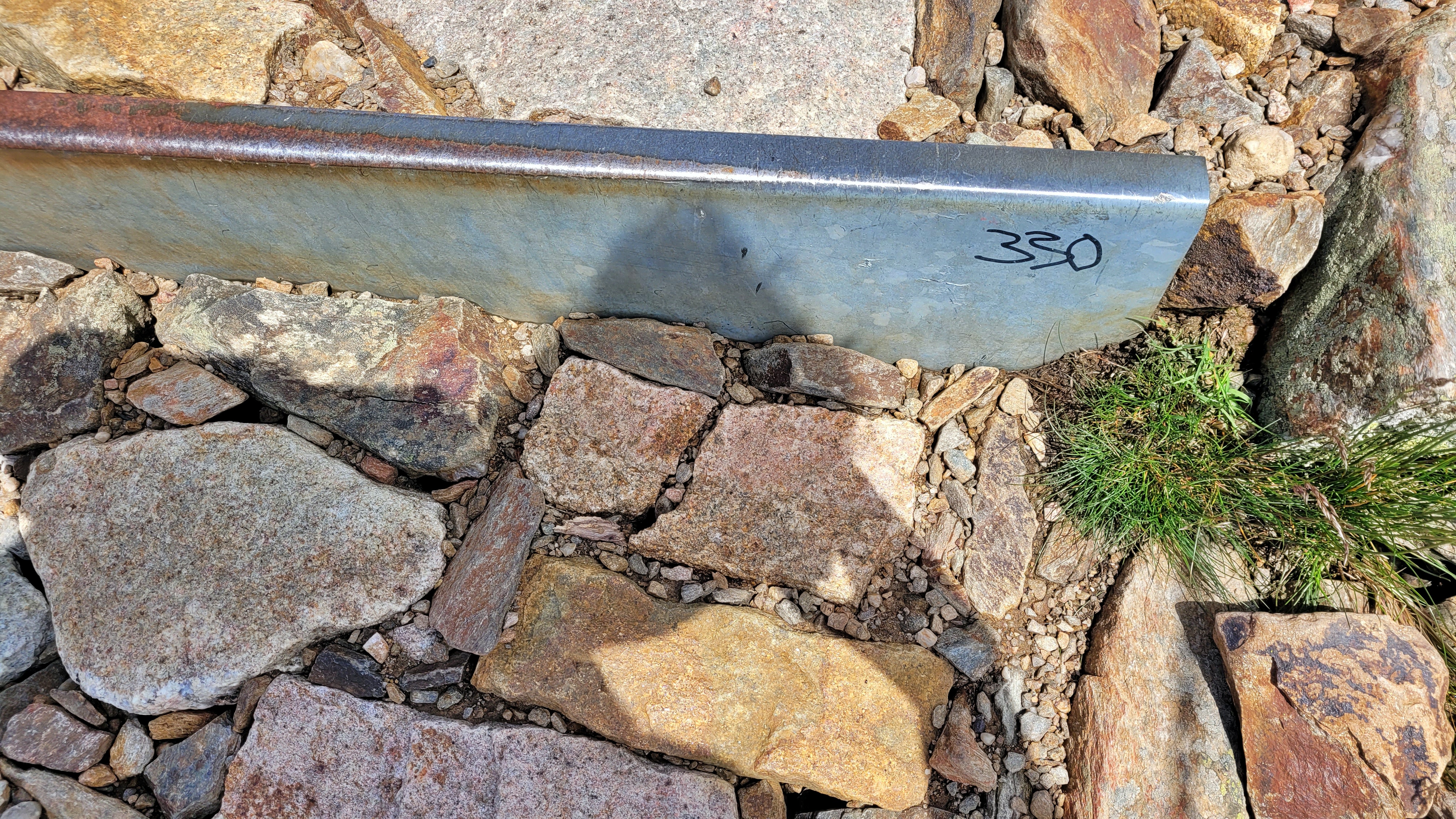
I am standing on the top of Sněžka, which is 1602 m above sea level. On the top of the mountain is not only the new Czech Post Office designed by architect Martin Rajniš, but also the Polish Lodge. The peak is crossed by the Czech-Polish border. Which you will soon realize, because I think I hear more Polish than Czech here. I choose almost the same route back. I return to Pec pod Sněžkou, where my journey ends.

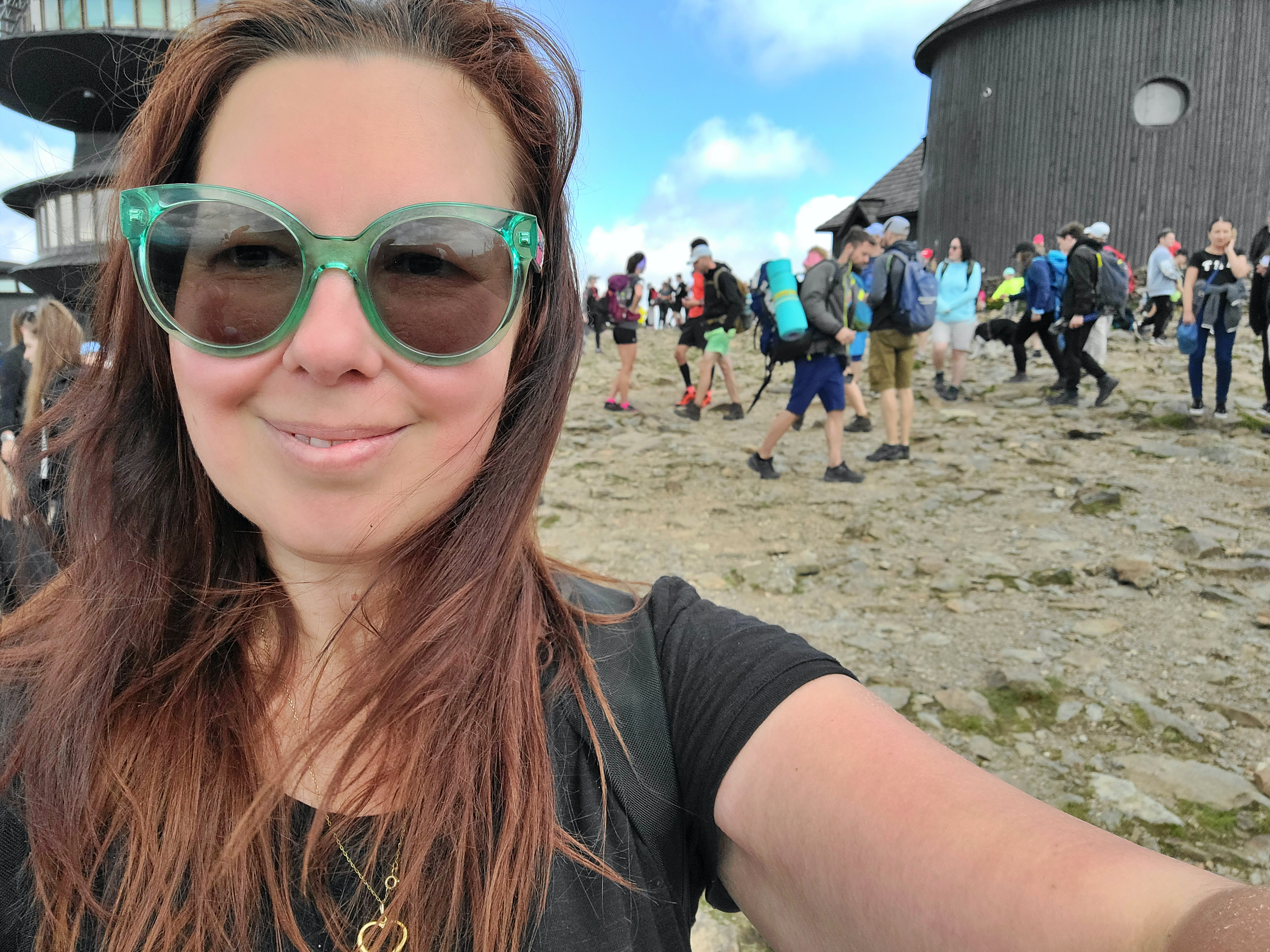
If you liked the article, I will be glad if you share it or leave a nice comment under the article.
I would also like to invite you to join me on Instagram and Facebook.



